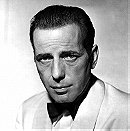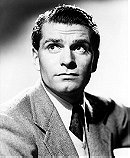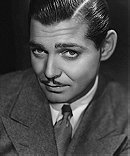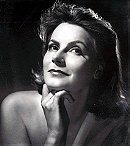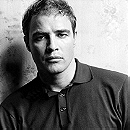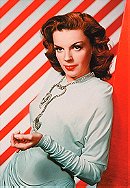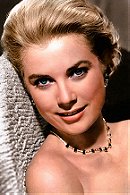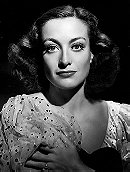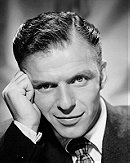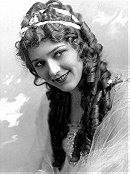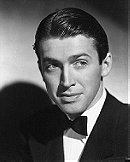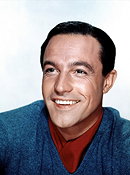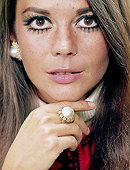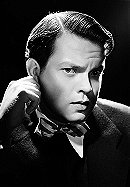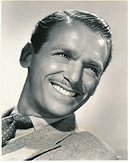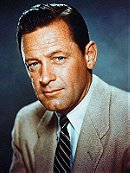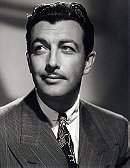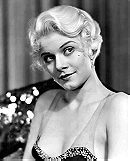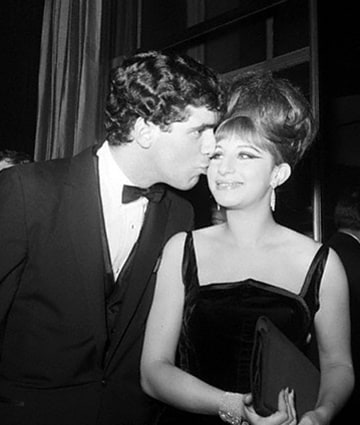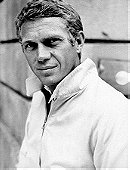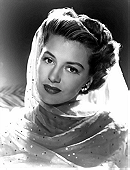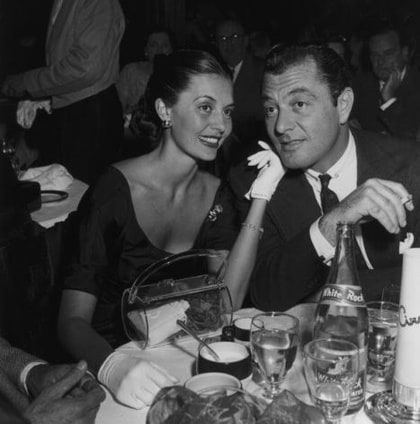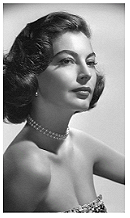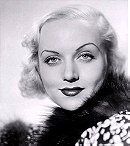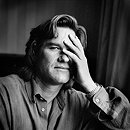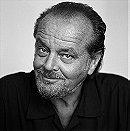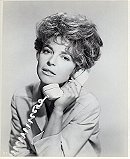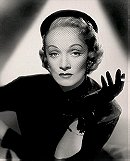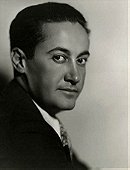Love among the stars
Sort by:
Showing 38 items
Rating:
List Type:
& Spencer Tracy

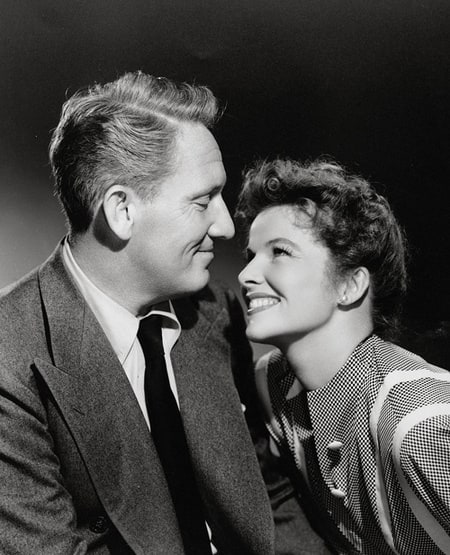

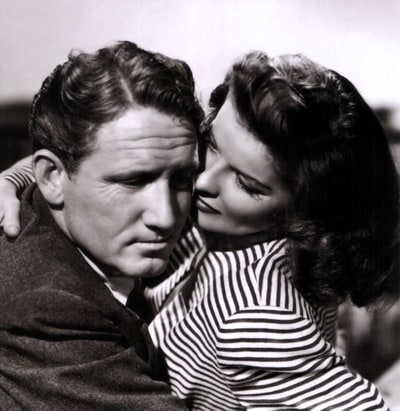


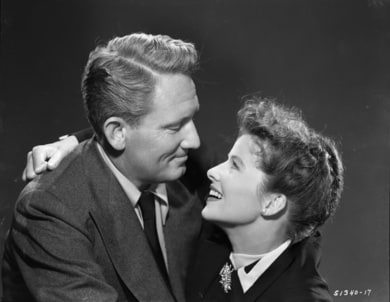




Story:
In 1942, Katharine Hepburn and Spencer Tracy co-starred in Woman of The Year, the first of nine films they would make together and the beginning of a romance that would become legendary. The story of their first meeting on the set of Woman of the Year has become legend. Joseph Mankiewicz, the producer of the movie, introduced Hepburn and Tracy in the MGM commissary where Hepburn quipped, "I'm afraid I'm a little tall for you, Mr. Tracy." To which Tracy replied, "Don't worry, Miss Hepburn, I'll cut you down to my size." Tracy , a devout Catholic, never divorced his wife to marry Katharine although they were estranged for many years. Because she didn’t care for tradition or social pressure, she was able to love him ardently without ever being resentful of not being able to become his wife. The usually liberated Hepburn adored Tracy and uncharacteristically strove to be what he wanted her to be, even trying to change aspects of her personality he might dislike. Of Tracy, she once said she never knew how he felt about her, he didn’t discuss it.
She never interfered or flaunted their affair although she cared little about scandal for herself. She did not even attend his funeral out of respect for his family. She said she had never watched Guess Who’s Coming to Dinner, their last film together. Tracy died a few weeks after filming was completed.











In 1942, Katharine Hepburn and Spencer Tracy co-starred in Woman of The Year, the first of nine films they would make together and the beginning of a romance that would become legendary. The story of their first meeting on the set of Woman of the Year has become legend. Joseph Mankiewicz, the producer of the movie, introduced Hepburn and Tracy in the MGM commissary where Hepburn quipped, "I'm afraid I'm a little tall for you, Mr. Tracy." To which Tracy replied, "Don't worry, Miss Hepburn, I'll cut you down to my size." Tracy , a devout Catholic, never divorced his wife to marry Katharine although they were estranged for many years. Because she didn’t care for tradition or social pressure, she was able to love him ardently without ever being resentful of not being able to become his wife. The usually liberated Hepburn adored Tracy and uncharacteristically strove to be what he wanted her to be, even trying to change aspects of her personality he might dislike. Of Tracy, she once said she never knew how he felt about her, he didn’t discuss it.
She never interfered or flaunted their affair although she cared little about scandal for herself. She did not even attend his funeral out of respect for his family. She said she had never watched Guess Who’s Coming to Dinner, their last film together. Tracy died a few weeks after filming was completed.
Moon River's rating:


& Lauren Bacall

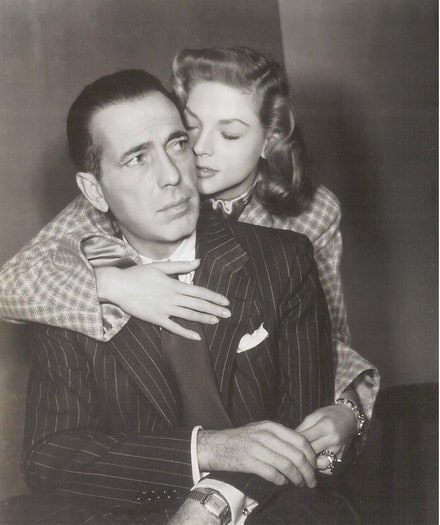








Story:
Humphrey Bogart was one of the manliest of actors -- often cast as the ‘tough guy’, he had just been signed to the movie To Have and Have Not, and the director, Howard Hawks, was on the lookout for the perfect female lead to work opposite him. One morning, while flicking through the latest Harper’s Bazaar, Howard’s wife noticed an absolutely stunning girl on the cover. With high cheekbones, soft auburn hair, and a tall athletic build, Mrs Hawks immediately showed the cover to her husband suggesting he call her in for a screen test. At that time, Lauren had no yet changed her name and was known as Betty Bacall. She was a young, 19 year old girl working as a model, and had never dreamed of the possibility of Hollywood! Of course, Lauren was a natural at the screen test, and Humphrey even remarked, "I just saw your test. We'll have a lot of fun together". Howard Hawks decided ‘Betty Bacall’ simply would not do for a future silver screen star and insisted she change her name to Lauren. Through out the movie, Humphrey took on the role of mentor and teacher, and the pair instantly formed an intimate bond. However, unfortunately at that time, Humphrey was involved in a loveless marriage to actress Mayo Methot. The pair began a very discreet affair, which was quite out of the norm for Humphrey -- he was torn between loyalty to his wife, despite them being almost estranged, and the deep feelings he felt for his new love. The affair continued for some months until finally, in February 1945, Humphrey & Mayo divorced. On May 21, 1946 on a farm in Pleasant Valley, Richmond County, Ohio, Humphrey, aged 46, & Lauren, aged 20, were married. The farm belonged to Humphrey’s good friend, Pulitzer winning author, Louis Bromfield.
“In the bathroom I could hear the start of the Wedding March. Oh God, why hadn’t they waited? Later George told me Bogie looked up and said, ‘Where is she?’ George’s romantic reply: ‘Hold it! She’s in the can!’ I emerged -- [the piano player] started again -- and George and I started our descent. My knees shook so, I was sure I’d fall down the stairs. Bogie standing there looking so vulnerable and so handsome . . .
“When I reached Bogie, he took my hand -- the enormous, beautiful white orchids I was holding were shaking themselves to pieces; as I stood there, there wasn’t a particle of me that wasn’t moving visibly…As I glanced at Bogie, I saw tears streaming down his face -- his ‘I do’ was strong and clear, though. As Judge Shettler said, “I now pronounce you man and wife,’ Bogie and I turned toward each other -- he leaned to kiss me -- I shyly turned my cheek -- all those eyes watching made me very self-conscious. He said, ‘Hello, Baby’. I hugged him and was reported to have said, “Oh, goody.’ Hard to believe, but maybe I did.”
“Everyone hugged and kissed everyone else and more tears were shed. Bogie said it was when he heard the beautiful words of the ceremony and realized what they meant -- what they should mean -- that he cried.”
--Excerpts from By Myself and Then Some by Lauren Bacall
In all, the pair acted in four big screen movies together, as well as countless television and radio series. They were one of the most successful acting couples in history. Settling down with their two children in Holmby Hills, Los Angeles, the pair seemed to live an idyllic, immensely private life. It was on the New Year's of 1956, while out to lunch at Romanoffs that Bogie, a heavy smoker for many years, began coughing terribly. He visited his doctor, and it was discovered that he had cancer of the oesophagus. Two short months later, he endured a nine and a half hour operation to remove his oesophagus and returned home in a wheelchair. Frail and weak, Humphrey would live out the rest of his days bedridden. His adoring wife was constantly at his side, tending to his every need, and accommodating all visitors as best she could. On January 12, 1957, good friends Spencer Tracy & Katharine Hepburn called to visit. Katharine recounted of their visit that, as they left, "He (Bogie) looked up at Spencer with the most rueful smile and said, 'Goodbye Spence,' and you could tell that he meant it. He'd always said, 'Goodnight' before. When we went downstairs, Spence looked at me and said, 'Bogie's going to die.'" The next morning, Lauren went to pick their children up from Sunday school. Humphrey nodded as she left and nonchalantly said, “Good bye, kid”. Upon her return, Lauren found Humphrey in a coma -- a coma he was never to wake from. The next morning, at 2:25am, Humphrey passed away and Lauren was left a widow at 32.
"I hope Bogie knew how much I loved him, how much he meant to me, how I highly valued him. I've had another life since then, but he was my first love. And you never forget your first love" -- Lauren Bacall
At the funeral, Lauren placed a whistle in Humphrey’s coffin, cleverly referencing the famous line from their first film together; "You know how to whistle, don't you? You just put your lips together and blow".










Humphrey Bogart was one of the manliest of actors -- often cast as the ‘tough guy’, he had just been signed to the movie To Have and Have Not, and the director, Howard Hawks, was on the lookout for the perfect female lead to work opposite him. One morning, while flicking through the latest Harper’s Bazaar, Howard’s wife noticed an absolutely stunning girl on the cover. With high cheekbones, soft auburn hair, and a tall athletic build, Mrs Hawks immediately showed the cover to her husband suggesting he call her in for a screen test. At that time, Lauren had no yet changed her name and was known as Betty Bacall. She was a young, 19 year old girl working as a model, and had never dreamed of the possibility of Hollywood! Of course, Lauren was a natural at the screen test, and Humphrey even remarked, "I just saw your test. We'll have a lot of fun together". Howard Hawks decided ‘Betty Bacall’ simply would not do for a future silver screen star and insisted she change her name to Lauren. Through out the movie, Humphrey took on the role of mentor and teacher, and the pair instantly formed an intimate bond. However, unfortunately at that time, Humphrey was involved in a loveless marriage to actress Mayo Methot. The pair began a very discreet affair, which was quite out of the norm for Humphrey -- he was torn between loyalty to his wife, despite them being almost estranged, and the deep feelings he felt for his new love. The affair continued for some months until finally, in February 1945, Humphrey & Mayo divorced. On May 21, 1946 on a farm in Pleasant Valley, Richmond County, Ohio, Humphrey, aged 46, & Lauren, aged 20, were married. The farm belonged to Humphrey’s good friend, Pulitzer winning author, Louis Bromfield.
“In the bathroom I could hear the start of the Wedding March. Oh God, why hadn’t they waited? Later George told me Bogie looked up and said, ‘Where is she?’ George’s romantic reply: ‘Hold it! She’s in the can!’ I emerged -- [the piano player] started again -- and George and I started our descent. My knees shook so, I was sure I’d fall down the stairs. Bogie standing there looking so vulnerable and so handsome . . .
“When I reached Bogie, he took my hand -- the enormous, beautiful white orchids I was holding were shaking themselves to pieces; as I stood there, there wasn’t a particle of me that wasn’t moving visibly…As I glanced at Bogie, I saw tears streaming down his face -- his ‘I do’ was strong and clear, though. As Judge Shettler said, “I now pronounce you man and wife,’ Bogie and I turned toward each other -- he leaned to kiss me -- I shyly turned my cheek -- all those eyes watching made me very self-conscious. He said, ‘Hello, Baby’. I hugged him and was reported to have said, “Oh, goody.’ Hard to believe, but maybe I did.”
“Everyone hugged and kissed everyone else and more tears were shed. Bogie said it was when he heard the beautiful words of the ceremony and realized what they meant -- what they should mean -- that he cried.”
--Excerpts from By Myself and Then Some by Lauren Bacall
In all, the pair acted in four big screen movies together, as well as countless television and radio series. They were one of the most successful acting couples in history. Settling down with their two children in Holmby Hills, Los Angeles, the pair seemed to live an idyllic, immensely private life. It was on the New Year's of 1956, while out to lunch at Romanoffs that Bogie, a heavy smoker for many years, began coughing terribly. He visited his doctor, and it was discovered that he had cancer of the oesophagus. Two short months later, he endured a nine and a half hour operation to remove his oesophagus and returned home in a wheelchair. Frail and weak, Humphrey would live out the rest of his days bedridden. His adoring wife was constantly at his side, tending to his every need, and accommodating all visitors as best she could. On January 12, 1957, good friends Spencer Tracy & Katharine Hepburn called to visit. Katharine recounted of their visit that, as they left, "He (Bogie) looked up at Spencer with the most rueful smile and said, 'Goodbye Spence,' and you could tell that he meant it. He'd always said, 'Goodnight' before. When we went downstairs, Spence looked at me and said, 'Bogie's going to die.'" The next morning, Lauren went to pick their children up from Sunday school. Humphrey nodded as she left and nonchalantly said, “Good bye, kid”. Upon her return, Lauren found Humphrey in a coma -- a coma he was never to wake from. The next morning, at 2:25am, Humphrey passed away and Lauren was left a widow at 32.
"I hope Bogie knew how much I loved him, how much he meant to me, how I highly valued him. I've had another life since then, but he was my first love. And you never forget your first love" -- Lauren Bacall
At the funeral, Lauren placed a whistle in Humphrey’s coffin, cleverly referencing the famous line from their first film together; "You know how to whistle, don't you? You just put your lips together and blow".
Moon River's rating:


& Vivien Leigh













Story:
It was love at first sight, at least for Leigh. As a 22-year-old starlet in 1935, she saw Olivier on the London stage and was instantly enthralled by his brilliant star power-and brooding good looks. 'Someday I am going to marry Laurence Olivier,' she told a friend, with the same conviction she'd later announce, 'I shall play Scarlett O'Hara' - years before landing the part. Such bold declarations were typical of the headstrong Leigh, who always knew what she wanted, and usually got it.
For Olivier, the attraction was almost as immediate. He too had first seen his future love on the stage and had been struck by her 'magical looks' and 'beautiful poise.' But, he wrote in his memoirs, 'she also had something else: an attraction of the most perturbing nature I had ever encountered.' Soon, a mutual friend introduced the two actors, beginning a professional acquaintance that spontaneously combusted into full-blown passion. There was only one complication. Make that two: At the time, both Olivier and Leigh were already married.
Olivier had wed fellow actor Jill Esmond in 1930. Even as he was falling in love with Leigh, his wife was carrying his first son, Tarquin. Leigh, meanwhile, was already a mother. She had married barrister Leigh Holman in 1932 - at only 19 - and had given birth to her daughter Suzanne within the year. Both Olivier and Leigh had thought themselves happily married, but after meeting each other, they realized how much romance they'd been missing. Olivier would call their attraction 'fatefully irresistible.' After two years of 'rapturous torment,' they gave into fate and ended their marriages.
'The great passion and adoration these two had for each other was truly electric,' once recollected Sunny Andrews, Vivien Leigh's long-time secretary. 'The way he looked at her and vice-versa - their responses were pure delight - almost as if, 'Wait until I get you alone' and 'Yes, love, how soon?''
Yet it was more than sex that charged this magnetic attraction. Quite simply, these two completed each other. Olivier inspired Leigh; he was her hero, her mentor, her soulmate. He shared her artistic aspirations, and moved her to aim even higher. In turn, she inspired him. This beautiful, sensual, witty woman not only sparked his intellect and libido, but also his personality. 'I never saw such a transformation,' said one Olivier chum. 'He went from a rather somber chap to an upbeat bon vivant.' Having discreetly lived together for the three years it took to finalize their divorces, Olivier and Leigh were finally free to marry in 1940. They slipped away for a civil ceremony, witnessed only by friends Garson Kanin and Katharine Hepburn. They next day, however, they announced their nuptials to the world, with a fanfare befitting a king and queen. By then, Leigh's Gone With the Wind and Olivier's Wuthering Heights had made them international stars, and they seemed to thrive on the attention. Portraying lovers on stage only seemed to intensify their offstage ardor. The early '40s were the happiest time for the Oliviers. Not even the outbreak of World War II could slow them down. Though Olivier served in the Royal Air Force, training fighter pilots, he and Leigh stayed active in the theater, even entertaining Allied troops on a tour of North Africa. In 1944, the couple bought a sprawling country home that became a weekend retreat. Here, the king and queen held court at lavish dinner parties. They guest list typically included such theatrical luminaries as Noel Coward, Orson Welles, and Marlene Dietrich; the revelry often lasted until dawn. But their domestic bliss was short-lived. The years that followed the war brought changes, especially for Leigh. Always in delicate health, she habitually worked herself to exhaustion, and as early as 1944, this began to take its toll: While filming Caesar and Cleopatra, Leigh fell and suffered a miscarriage that left her deeply depressed. The next year, she was stricken with tuberculosis, in the midst of her triumphant stage return in The Skin of Our Teeth. A long convalescence followed, during which Olivier began to conquer the theater world. While he was wowing London with the classics, she could only sit home.
Eventually Leigh returned to work, but she never regained her stature as Olivier's superstar equal. When he was knighted in 1947, she fell further into her husband's shadow. This was more than a blow to her ego. Vivien's fading fame cut right to her heart. 'She had to be successful because she had so much regard for Larry,' Olivia de Havilland once said. 'She wanted to measure up…to keep his admiration and his love.' But even if Leigh could have settled for second billing in their marriage, fate and her own frail health intervened. In addition to her physical ailments, Leigh began to suffer serious mood swings that were later diagnosed as manic-depression. One night she'd be the hyper-active life of the party; the next she'd be lost in dark clouds of despair. With their once idyllic home life in upheaval, Olivier increasingly sought refuge in his work at the theater. Still, he tried to include her in his success. A 1948 tour of Australia brought them back together on stage, yet Olivier came home feeling he had 'lost' Leigh. Within months she told him she didn't love him anymore. 'I felt as if I had been sentenced to death,' Olivier wrote. 'The central force in my life, my heart in fact…had been removed.' And yet they stayed together more than ten years afterward, as if clinging to the memory of the great passion that had flamed so brightly and then burned out - as if each realized that the other had indeed been the love of a lifetime. Then too, they were bound by a public who still saw them as the King and Queen. So they carried on as 'the Oliviers,' successfully performing together on stage, while living ever more separately at home. In the early '50s, Leigh's mental health grew more unstable. There were periods of heavy drinking, and an affair with actor Peter Finch. Eventually, in 1953, she suffered a breakdown, and spent time in a mental hospital. There, she received the first of the many shock treatments she was to undergo throughout her later years. Home after that first treatment, Leigh seemed a stranger. Feeling increasingly helpless, Olivier buried himself in his work. Their marriage would endure another miscarriage, more bouts of manic-depression, and less meaningful opportunities for the now middle-aged Leigh. Finally, in 1957, it was Olivier who could no longer continue. By then he'd become involved with actress Joan Plowright. He left Leigh in 1958; they divorced in 1960. Olivier married Plowright three months later.
'Until her dying day, I don't think Vivien believed Olivier was beyond recall,' said a colleague who knew her in later years. Still, life did go on without Larry. During the sixties, Leigh revived her career, starring on screen in The Roman Spring of Mrs. Stone (1961) and Ship of Fools (1965), and even winning a Tony in the Broadway production of Tovarich (1963). She also found romance with actor Jack Merivale, a friend since 1940. But her manic-depressive interludes never really left her, nor did her incipient TB, which fatally flared up again in 1967. She died at her home on the night of July 7. Hearing the news in his hospital room, where he was being treated for cancer, Olivier immediately discharged himself, and rushed to Leigh's deathbed. 'I stood and prayed for forgiveness for all the evils that had sprung up between us,' he later wrote. 'It has always been impossible for me not to believe that I was somehow the cause of Vivien's disturbances.'
But if Leigh had ever shared that belief, she had long since forgiven him. She would go to her grave still loving Olivier, telling writer Radie Harris shortly before her death that she'd 'rather have lived a short life with Larry than face a long life without him.'
Olivier would outlive Leigh for 22 years, during which he remained devotedly married to Plowright. Yet in the end, it was clear that he'd never gotten over Vivien either: In 1986, a visitor to his home found the 80-year-old Olivier sitting alone, watching Leigh in an old film on television. 'This, this was love,' he said, in tears. 'This was the real thing.'













It was love at first sight, at least for Leigh. As a 22-year-old starlet in 1935, she saw Olivier on the London stage and was instantly enthralled by his brilliant star power-and brooding good looks. 'Someday I am going to marry Laurence Olivier,' she told a friend, with the same conviction she'd later announce, 'I shall play Scarlett O'Hara' - years before landing the part. Such bold declarations were typical of the headstrong Leigh, who always knew what she wanted, and usually got it.
For Olivier, the attraction was almost as immediate. He too had first seen his future love on the stage and had been struck by her 'magical looks' and 'beautiful poise.' But, he wrote in his memoirs, 'she also had something else: an attraction of the most perturbing nature I had ever encountered.' Soon, a mutual friend introduced the two actors, beginning a professional acquaintance that spontaneously combusted into full-blown passion. There was only one complication. Make that two: At the time, both Olivier and Leigh were already married.
Olivier had wed fellow actor Jill Esmond in 1930. Even as he was falling in love with Leigh, his wife was carrying his first son, Tarquin. Leigh, meanwhile, was already a mother. She had married barrister Leigh Holman in 1932 - at only 19 - and had given birth to her daughter Suzanne within the year. Both Olivier and Leigh had thought themselves happily married, but after meeting each other, they realized how much romance they'd been missing. Olivier would call their attraction 'fatefully irresistible.' After two years of 'rapturous torment,' they gave into fate and ended their marriages.
'The great passion and adoration these two had for each other was truly electric,' once recollected Sunny Andrews, Vivien Leigh's long-time secretary. 'The way he looked at her and vice-versa - their responses were pure delight - almost as if, 'Wait until I get you alone' and 'Yes, love, how soon?''
Yet it was more than sex that charged this magnetic attraction. Quite simply, these two completed each other. Olivier inspired Leigh; he was her hero, her mentor, her soulmate. He shared her artistic aspirations, and moved her to aim even higher. In turn, she inspired him. This beautiful, sensual, witty woman not only sparked his intellect and libido, but also his personality. 'I never saw such a transformation,' said one Olivier chum. 'He went from a rather somber chap to an upbeat bon vivant.' Having discreetly lived together for the three years it took to finalize their divorces, Olivier and Leigh were finally free to marry in 1940. They slipped away for a civil ceremony, witnessed only by friends Garson Kanin and Katharine Hepburn. They next day, however, they announced their nuptials to the world, with a fanfare befitting a king and queen. By then, Leigh's Gone With the Wind and Olivier's Wuthering Heights had made them international stars, and they seemed to thrive on the attention. Portraying lovers on stage only seemed to intensify their offstage ardor. The early '40s were the happiest time for the Oliviers. Not even the outbreak of World War II could slow them down. Though Olivier served in the Royal Air Force, training fighter pilots, he and Leigh stayed active in the theater, even entertaining Allied troops on a tour of North Africa. In 1944, the couple bought a sprawling country home that became a weekend retreat. Here, the king and queen held court at lavish dinner parties. They guest list typically included such theatrical luminaries as Noel Coward, Orson Welles, and Marlene Dietrich; the revelry often lasted until dawn. But their domestic bliss was short-lived. The years that followed the war brought changes, especially for Leigh. Always in delicate health, she habitually worked herself to exhaustion, and as early as 1944, this began to take its toll: While filming Caesar and Cleopatra, Leigh fell and suffered a miscarriage that left her deeply depressed. The next year, she was stricken with tuberculosis, in the midst of her triumphant stage return in The Skin of Our Teeth. A long convalescence followed, during which Olivier began to conquer the theater world. While he was wowing London with the classics, she could only sit home.
Eventually Leigh returned to work, but she never regained her stature as Olivier's superstar equal. When he was knighted in 1947, she fell further into her husband's shadow. This was more than a blow to her ego. Vivien's fading fame cut right to her heart. 'She had to be successful because she had so much regard for Larry,' Olivia de Havilland once said. 'She wanted to measure up…to keep his admiration and his love.' But even if Leigh could have settled for second billing in their marriage, fate and her own frail health intervened. In addition to her physical ailments, Leigh began to suffer serious mood swings that were later diagnosed as manic-depression. One night she'd be the hyper-active life of the party; the next she'd be lost in dark clouds of despair. With their once idyllic home life in upheaval, Olivier increasingly sought refuge in his work at the theater. Still, he tried to include her in his success. A 1948 tour of Australia brought them back together on stage, yet Olivier came home feeling he had 'lost' Leigh. Within months she told him she didn't love him anymore. 'I felt as if I had been sentenced to death,' Olivier wrote. 'The central force in my life, my heart in fact…had been removed.' And yet they stayed together more than ten years afterward, as if clinging to the memory of the great passion that had flamed so brightly and then burned out - as if each realized that the other had indeed been the love of a lifetime. Then too, they were bound by a public who still saw them as the King and Queen. So they carried on as 'the Oliviers,' successfully performing together on stage, while living ever more separately at home. In the early '50s, Leigh's mental health grew more unstable. There were periods of heavy drinking, and an affair with actor Peter Finch. Eventually, in 1953, she suffered a breakdown, and spent time in a mental hospital. There, she received the first of the many shock treatments she was to undergo throughout her later years. Home after that first treatment, Leigh seemed a stranger. Feeling increasingly helpless, Olivier buried himself in his work. Their marriage would endure another miscarriage, more bouts of manic-depression, and less meaningful opportunities for the now middle-aged Leigh. Finally, in 1957, it was Olivier who could no longer continue. By then he'd become involved with actress Joan Plowright. He left Leigh in 1958; they divorced in 1960. Olivier married Plowright three months later.
'Until her dying day, I don't think Vivien believed Olivier was beyond recall,' said a colleague who knew her in later years. Still, life did go on without Larry. During the sixties, Leigh revived her career, starring on screen in The Roman Spring of Mrs. Stone (1961) and Ship of Fools (1965), and even winning a Tony in the Broadway production of Tovarich (1963). She also found romance with actor Jack Merivale, a friend since 1940. But her manic-depressive interludes never really left her, nor did her incipient TB, which fatally flared up again in 1967. She died at her home on the night of July 7. Hearing the news in his hospital room, where he was being treated for cancer, Olivier immediately discharged himself, and rushed to Leigh's deathbed. 'I stood and prayed for forgiveness for all the evils that had sprung up between us,' he later wrote. 'It has always been impossible for me not to believe that I was somehow the cause of Vivien's disturbances.'
But if Leigh had ever shared that belief, she had long since forgiven him. She would go to her grave still loving Olivier, telling writer Radie Harris shortly before her death that she'd 'rather have lived a short life with Larry than face a long life without him.'
Olivier would outlive Leigh for 22 years, during which he remained devotedly married to Plowright. Yet in the end, it was clear that he'd never gotten over Vivien either: In 1986, a visitor to his home found the 80-year-old Olivier sitting alone, watching Leigh in an old film on television. 'This, this was love,' he said, in tears. 'This was the real thing.'
Moon River's rating:


& Carole Lombard








Story:
Clark Gable, was a dashing leading man in Hollywood in the 1930’s and 1940’s, and Carole Lombard was a beautiful comedienne at the same time. Each had outstanding careers, and were among the most talked about stars. While individually they achieved fame, together they became one of the more perfect relationships in Hollywood.
Clark Gable was born on February 1, 1901 in Cadiz, Ohio. After a start in silent movies, Gable became one of the most popular actors in the movie history. Gable had starring roles in such hits as “It Happened One Night”, “Mutiny on the Bounty”, “The Hucksters” and probably his most famous role as Rhett Butler in “Gone with the Wind.”
Carole Lombard was born on October 6, 1908 in Fort Wayne, Indiana. Lombard got her start at the age of 12 in movies, and steadily began to create a career. Lombard was in several notable movies in the 30’s and 40’s including hits such as “Bolero”, “Now and Forever”, “My Man Godfrey” and “Mr. & Mrs. Smith”.
While filming the movie “No Man of Her Own” in 1932, Gable and Lombard first met. Gable and Lombard were both starting to make some headway in their careers, but because both were married at the time, there was not any romantic interest shown by either.
However, the next time Gable and Lombard met was in 1935 at a party given by a mutual friend. In 1935, Lombard was divorced and Gable was separated from his wife. They were very attracted to each other and spent the entire evening dancing with each other. This was the start of a beautiful relationship.
However, because Clark Gable was still married, the couple needed to remain secretive about the relationship. They spent the time together in secret until Gable’s divorce was final in 1938. During a break in filming “Gone with the Wind” in 1939, Clark Gable and Carole Lombard, who playfully referred to each other as “Ma and Pa” were married.
The couple continued to work in movies, but spent as much time together as possible. They were a loving couple who bought each other moving gifts and presents, in the grand Hollywood style, including hams with Gables picture painted on them, and a fire truck for her!
However, the ideal relationship was brought down to earth on January 26, 1942. Lombard was in the middle of a cross country tour to raise money by the sale of war bonds for the U.S. military effort in World War II. She was in Indianapolis, Indiana and wanted to go home and be with Gable. So, instead of staying over in Indianapolis for the evening and flying out the next day, they boarded the 4 a.m. flight. The next day, the plane landed in Albuquerque, New Mexico to refuel and pick up passengers. The flight took off again at 7:07 p.m. However, the plane never made it. At around 7:30 p.m. the plane crashed in the Nevada Mountains, killing all the passengers on board, including Carole Lombard.
The news of Lombard’s death came as a shock to Gable, and the world. The love that Gable and Lombard worked so hard to attain was taken away in a brief moment.
The world has had many memorable couples, however, the pairing of Gable and Lombard was one of the most perfect couples in memory, but like many love stories, had a tragic ending.








Clark Gable, was a dashing leading man in Hollywood in the 1930’s and 1940’s, and Carole Lombard was a beautiful comedienne at the same time. Each had outstanding careers, and were among the most talked about stars. While individually they achieved fame, together they became one of the more perfect relationships in Hollywood.
Clark Gable was born on February 1, 1901 in Cadiz, Ohio. After a start in silent movies, Gable became one of the most popular actors in the movie history. Gable had starring roles in such hits as “It Happened One Night”, “Mutiny on the Bounty”, “The Hucksters” and probably his most famous role as Rhett Butler in “Gone with the Wind.”
Carole Lombard was born on October 6, 1908 in Fort Wayne, Indiana. Lombard got her start at the age of 12 in movies, and steadily began to create a career. Lombard was in several notable movies in the 30’s and 40’s including hits such as “Bolero”, “Now and Forever”, “My Man Godfrey” and “Mr. & Mrs. Smith”.
While filming the movie “No Man of Her Own” in 1932, Gable and Lombard first met. Gable and Lombard were both starting to make some headway in their careers, but because both were married at the time, there was not any romantic interest shown by either.
However, the next time Gable and Lombard met was in 1935 at a party given by a mutual friend. In 1935, Lombard was divorced and Gable was separated from his wife. They were very attracted to each other and spent the entire evening dancing with each other. This was the start of a beautiful relationship.
However, because Clark Gable was still married, the couple needed to remain secretive about the relationship. They spent the time together in secret until Gable’s divorce was final in 1938. During a break in filming “Gone with the Wind” in 1939, Clark Gable and Carole Lombard, who playfully referred to each other as “Ma and Pa” were married.
The couple continued to work in movies, but spent as much time together as possible. They were a loving couple who bought each other moving gifts and presents, in the grand Hollywood style, including hams with Gables picture painted on them, and a fire truck for her!
However, the ideal relationship was brought down to earth on January 26, 1942. Lombard was in the middle of a cross country tour to raise money by the sale of war bonds for the U.S. military effort in World War II. She was in Indianapolis, Indiana and wanted to go home and be with Gable. So, instead of staying over in Indianapolis for the evening and flying out the next day, they boarded the 4 a.m. flight. The next day, the plane landed in Albuquerque, New Mexico to refuel and pick up passengers. The flight took off again at 7:07 p.m. However, the plane never made it. At around 7:30 p.m. the plane crashed in the Nevada Mountains, killing all the passengers on board, including Carole Lombard.
The news of Lombard’s death came as a shock to Gable, and the world. The love that Gable and Lombard worked so hard to attain was taken away in a brief moment.
The world has had many memorable couples, however, the pairing of Gable and Lombard was one of the most perfect couples in memory, but like many love stories, had a tragic ending.
Moon River's rating:









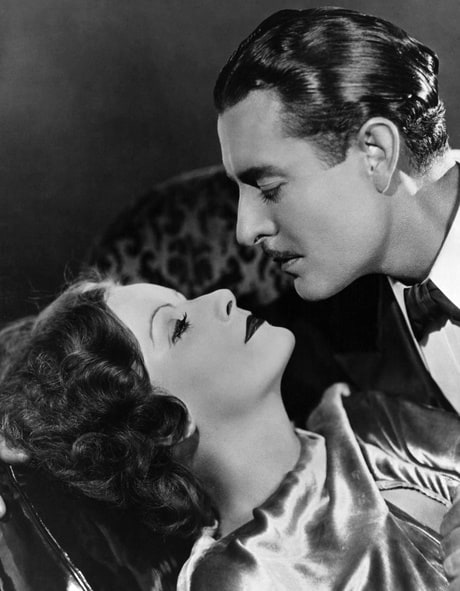

When John Gilbert, the hottest star of the silent era of Hollywood, first met Greta Garbo, the Icy Young Swede, she snubbed him. Not long after, Louis B. Mayer, head of MGM, forced them to work together in a film. He felt that the young starlet who lit up the silver screen could only benefit by playing alongside Gilbert. Garbo, sad and vulnerable after the death of her sister Alva, wanted to go home. Gilbert was facing divorce from his wife and didn't want to work with such an awkward-co-star, who already insisted on walking off the set promptly at 5.30, even in mid-scene.
So everyone was expecting some kind of explosion when they began working on the film, Flesh and the Devil, they got one: an explosion of passion. There, on the set, in front of everyone, they fell madly in love with each other. What followed in their lives was to be as turbulent and as dramatic as any Hollywood melodrama. “They were the first most glamorous couple in the world” To find out all about life in the media spotlight. Their lives would never be the same again. They met, officially, on a hot production stage one summer day in 1926.He was twenty-seven years old; she was twenty (near to be twenty-one). Previous to their formal introduction by Clarence Brown, Gilbert and Garbo, had a less than nothing acquaintance on the MGM lot. Greta recalled seeing lack a number of times as both were hurrying to their respective movie sets.
On one occasion, writer Frances Marion reported, a gregarious Gilbert hailed his fellow worker with a cheery, “Hello, Greta!” Unaccustomed to a stranger speaking to her in such familiar terms, she stopped and correct him. “It's Miss Garbo,” she announced. Gilbert enjoyed telling the story to friends. “Imagine upstaging me!” he laughed. On August 17, Garbo returned to the studio. Director Clarence Brown suggested to Gilbert that he should walk over to her and introduce himself. “To hell with her,” he said. Gilbert didn't like her very much. Filming started without any problems. The first scene they shot together was the train station scene, where Greta and John's character first See each other. That following weekend, Garbo met Stiller (her mentor) and some friends. She talked About Gilbert and it seemed that it was love at first sight. Back on the set, Thalberg, (head of production) heard and saw the electricity between Garbo and Gilbert, so he assigned Frances Marion to re-write scenes with an eye for passion. Garbo, liked to work with Gilbert, she started feeling better. Director Brown also treated Garbo very nice. He understood her acting possibilities and respected her. Brown would talk to the actors in a softest voice. He was especially careful with Garbo.
Because of their work, Greta Garbo and John Gilbert spent all of their days together, and Gilbert Took advantage of every opportunity of press his cause. The opportunities were many and suitable. In the picture they were making, they portrayed a man and a woman hopelessly and violently in love.
However dated and droll most of Flesh and the Devil seems when seen to-day, the passionate love scenes Between Gilbert as Leo, and Garbo as Felicitas, who in the film was married to Lars Hanson, project aquality of conviction beyond the most accomplished play-acting. “Ever before has John Gilbert been so intense in his portrayal of a man in love,” wrote the critics of The New York Herald-Tribune in reviewing the film. “Never before has a woman so alluring, with a seductive grace that is far more potent than mere beauty, appeared on the screen. Greta Garbo is the epitome of pulchritude, the personification of passion. Never in the screen, we had seen seduction so perfectly done."
Off the set, Gilbert and Garbo were also getting better acquainted. They often dined together, and the young actress became rather frequent visitor at Gilbert's Tower Road Mansion, set high on a hill overlooking Beverly Hills. Sometimes on Sundays, they went off in one of Gilbert's sleek, high-powered roadsters for a day's drive and a picnic in the mountains. Nobody at this time-and but once later- ever heard Greta Garbo talk in public about John, but he couldn't keep quiet about his new Swedish friend.
“Garbo is marvelous,” he said, ” the most alluring creature you have ever seen”. Capricious as the devil, whimsical, temperamental, and fascinating.When Gilbert invited other guests to his house, she was stricken speechless and displayed an uncontrollable urge to flee into the hills, or back to her hotel. Gilbert, who enjoyed having a Greta many people around him, Undertook the task of trying to make her feel at ease with his friends. His principal training ground for bringing her out socially, were his Sunday buffets, which had become a kind of local institution, and were usually attended by some two dozen actors, actresses, producers, directors, and other film people.
Gilbert hoped that Greta Garbo, would lose some of her shyness, and learn to enjoy his way of living. John Gilbert tried to instill in Garbo a confident social manner. "He wanted her to be the semiofficial chatelaine of the house on the hill,” Carey Wilson has said. “She was one of the sweetest and finest person I Ever knew, and she tried to play that role as Jack wished, but it was hard for her.” Sometimes, when buffet Had been prepared, Greta would become very nervous and uneasy if the quests were slow in the beginning to eat. She would go around to Jack, and whisper anxiously that the food was ready but nobody was eating.
“Well, just go and tell the people it's time to eat,” Jack would say. But things like that she couldn't do.What was second nature for him was agony for her. Carey Wilson recalled. Regardless of her tentative social attitude, she held total fascination for Gilbert.Gilbert taught Greta how to play tennis, and though her from was unconventional-she grasped the racked around the middle of the handle instead of at the end-she developed into quite a good player.Wilson recalls one period when, Gilbert being busy at the studio, he and Greta played a singles match every day, for sixteen days in a row. On the sixteenth day, she was the winner, for the first time. “Now I never play you singles again,” she told Wilson. “She didn't say why,” Wilson has remarked. “Evidently she had reached some goal.”
When she was together with Gilbert and Wilson, she was almost always in gay spirits and seemed to fancy herself as a kind of third musketeer. Both Gilbert and Wilson wore loosefitting, wrap-around polo coat with a belt that tied like sash. One day Greta showed up wearing a coat exactly like theirs. “Now I'm one of the boys,” she announced. She was interested in perfecting her English, and when either Gilbert or Wilson used a word or expression she didn't understand, usually said, “Come on, I'm one of the boys, tell me what it means” Sometimes, when the three friends were sitting around after dinner, she would get up and say, “I take a walk.” It was understood that she liked to walk herself, and she would disappear alone into the hills above Gilbert's house. She had been warned that there were snakes in the hills. “So?” she replied. Often she stayed away until long after dark, and more than once Gilbert and Wilson set out to look for her. When she returned from her solitary walks, she would be greatly amused if the boys showed signs of having been worried about her. With the boys or with Gilbert alone she was talkative, natural and seemingly content.
On the peak of their love affair, they were calling each other by pet names. Gilbert's favourite for Greta Garbo Was “Fleka” derived from the Swedish “svensk flicka” meaning “Swedish Girl.” Another was “Gee-bo,” at other times he referred to her as “The Swede.” Her nickname for him was, “Jacky,” which, because of the Swedes' difficulty in pronouncing the letter “J” she pronounced, “Yacky.”
Shooting on Flesh and the Devil ended on 28 September 1926. For months fan magazines, gossip columnists and radio had been talking about the big love affair. The public was eager to see the movie. The film premiered At New York's Capitol Theatre on January 1927. The critics great, the film was a big hit, and is now an ultimate classic.
Moon River's rating:


& Marilyn Monroe






Story:
Marilyn Monroe, 85-years-old today, and Marlon Brando had a decade-long affair that was mostly secret to the public until more recently.
Brando wrote in his autobiography Songs My Mother Taught Me that he met Monroe at a party for The Actors’ Studio in the 1950s while she was playing piano, unnoticed by anybody else there.
”We had an affair and saw each other intermittently for years,” wrote Brando. “Once she called and invited me to come over for dinner. I already had plans but promised to call the following week. She said fine. Two or three days later, she was dead. I’m pretty good with people’s moods, and with Marilyn I didn’t sense any depression or clue of impending self-destruction during her call.”






Marilyn Monroe, 85-years-old today, and Marlon Brando had a decade-long affair that was mostly secret to the public until more recently.
Brando wrote in his autobiography Songs My Mother Taught Me that he met Monroe at a party for The Actors’ Studio in the 1950s while she was playing piano, unnoticed by anybody else there.
”We had an affair and saw each other intermittently for years,” wrote Brando. “Once she called and invited me to come over for dinner. I already had plans but promised to call the following week. She said fine. Two or three days later, she was dead. I’m pretty good with people’s moods, and with Marilyn I didn’t sense any depression or clue of impending self-destruction during her call.”
Moon River's rating:


& Joanne Woodward


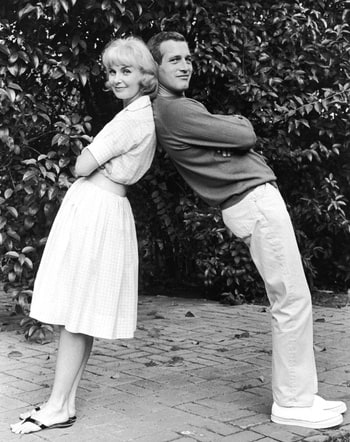







Story:
Fifty years, for any marriage is an extraordinary feat -- but, a Hollywood marriage?Why, it’s an eternity! Paul Newman & Joanne Woodward were famously dubbed the golden couple of Hollywood. Their love story started like this...
Paul Newman met the beautiful blonde, Joanne Woodward, in 1953 during his Broadway debut starring in the romantic drama, Picnic. Joanne, an understudy to the female lead, was instantly captivated, Paul -- however, unfortunately for them both, Paul was already married. Further to their shared love of Broadway, the pair had much in common: they were both members of Lee Strasberg’s prestigious Actors Studio, and after finalising the play, both took to Hollywood to take on the silver screen. Despite not working together again for the next 4 years, they remained firm friends. Finally, in 1957, after Paul had divorced his first wife, they were cast opposite one another in the movie The Long, Hot Summer. Passion immediately reignited, and an intimate love affair began. On January 29th, 1958 the pair married. The marriage of Paul Newman & Joanne Woodward was not grand or ostentatious, but a lovely, quiet affair at the Hotel El Ranch Vegas, in Las Vegas, Nevada -- but it was nonetheless, very ‘them’. As a wedding gift to his beautiful new wife, Paul gifted Joanne a silver cup that he had inscribed with the words, "So you wound up with Apollo/ If he's sometimes hard to swallow/Use this." Following the intimate ceremony, the couple honeymooned at London’s Connaught Hotel before returning to the US to make their home in an 18th-century Connecticut farmhouse -- very atypical for a celebrity couple of the fifty’s.
When asked about their unique choice of residence, Joanne responded "We were never Hollywood people; we just liked it better here. It also probably helps that we always enjoyed each other's company."
Not only were they blissfully happy in their comfortable little abode in Westport, Connecticut, they also completely immersed themselves into the local community -- most prominently, restoring the Westport Country Playhouse.
Joanne described her marriage to Paul as, "Being married to the most considerate, romantic man".
Throughout their wonderful fifty-year marriage, Paul & Joanne starred in numerous films together, as well as Paul directing several films Joanne acted in. One of the secrets to the lasting relationship of this down-to-earth couple would have been the fact that they never ‘sugar-coated’ their weakness’ -- they openly admitted that working together, especially on The Effect of Gamma Rays on Man-in-the Moon Marigolds caused strain on their marriage. But their respect and adoration of each other pushed them to work through the tension and learn from their mistakes.
It was in January of 2008 that the steadfast couple celebrated their ‘golden’ 50th wedding anniversary. Still as happy as ever, Newman was set to direct a stage production at the Westport Country Playhouse, Of Mice and Men -- however, quite unfortunately had to withdraw in June of that year due to ‘health reasons’. It was tragically announced that Paul had been diagnosed with lung cancer. The hearts of fans the world over went out to this beautiful couple as the future looked bleak. The suffering did not last long -- Paul sadly passed away on September 26th, 2008 at the age of 83.
When asked why he never was unfaithful to Joanne, Paul famously replied, "Why fool around with hamburger when you have steak at home?"










Fifty years, for any marriage is an extraordinary feat -- but, a Hollywood marriage?Why, it’s an eternity! Paul Newman & Joanne Woodward were famously dubbed the golden couple of Hollywood. Their love story started like this...
Paul Newman met the beautiful blonde, Joanne Woodward, in 1953 during his Broadway debut starring in the romantic drama, Picnic. Joanne, an understudy to the female lead, was instantly captivated, Paul -- however, unfortunately for them both, Paul was already married. Further to their shared love of Broadway, the pair had much in common: they were both members of Lee Strasberg’s prestigious Actors Studio, and after finalising the play, both took to Hollywood to take on the silver screen. Despite not working together again for the next 4 years, they remained firm friends. Finally, in 1957, after Paul had divorced his first wife, they were cast opposite one another in the movie The Long, Hot Summer. Passion immediately reignited, and an intimate love affair began. On January 29th, 1958 the pair married. The marriage of Paul Newman & Joanne Woodward was not grand or ostentatious, but a lovely, quiet affair at the Hotel El Ranch Vegas, in Las Vegas, Nevada -- but it was nonetheless, very ‘them’. As a wedding gift to his beautiful new wife, Paul gifted Joanne a silver cup that he had inscribed with the words, "So you wound up with Apollo/ If he's sometimes hard to swallow/Use this." Following the intimate ceremony, the couple honeymooned at London’s Connaught Hotel before returning to the US to make their home in an 18th-century Connecticut farmhouse -- very atypical for a celebrity couple of the fifty’s.
When asked about their unique choice of residence, Joanne responded "We were never Hollywood people; we just liked it better here. It also probably helps that we always enjoyed each other's company."
Not only were they blissfully happy in their comfortable little abode in Westport, Connecticut, they also completely immersed themselves into the local community -- most prominently, restoring the Westport Country Playhouse.
Joanne described her marriage to Paul as, "Being married to the most considerate, romantic man".
Throughout their wonderful fifty-year marriage, Paul & Joanne starred in numerous films together, as well as Paul directing several films Joanne acted in. One of the secrets to the lasting relationship of this down-to-earth couple would have been the fact that they never ‘sugar-coated’ their weakness’ -- they openly admitted that working together, especially on The Effect of Gamma Rays on Man-in-the Moon Marigolds caused strain on their marriage. But their respect and adoration of each other pushed them to work through the tension and learn from their mistakes.
It was in January of 2008 that the steadfast couple celebrated their ‘golden’ 50th wedding anniversary. Still as happy as ever, Newman was set to direct a stage production at the Westport Country Playhouse, Of Mice and Men -- however, quite unfortunately had to withdraw in June of that year due to ‘health reasons’. It was tragically announced that Paul had been diagnosed with lung cancer. The hearts of fans the world over went out to this beautiful couple as the future looked bleak. The suffering did not last long -- Paul sadly passed away on September 26th, 2008 at the age of 83.
When asked why he never was unfaithful to Joanne, Paul famously replied, "Why fool around with hamburger when you have steak at home?"
Moon River's rating:


& Mel Ferrer





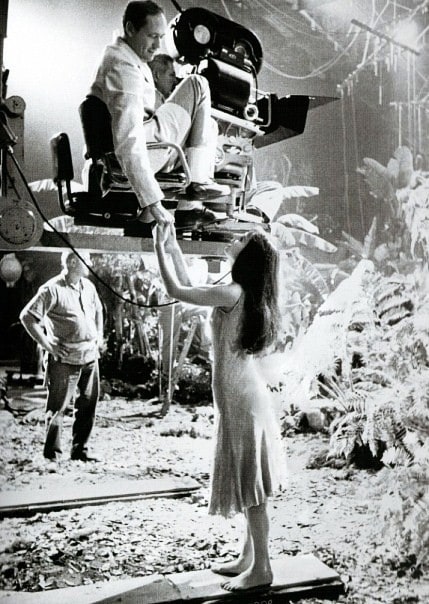


Story:
At Audrey Hepburn’s funeral in Switzerland in 1993, one of those following the cortege with his wife was a tall, thin, white-haired man in his mid-70s.
Visibly affected, he seemed to hold back as he entered the church with the other guests. Then, as the coffin was rested on a flower-decked catafalque, Audrey’s elder son Sean detached himself from the pallbearers and, embracing the man, drew him in among the intimates.
The mourner was Sean’s father Mel Ferrer. He had been Audrey’s first husband – and she his third wife – and they had barely spoken for 25 years. Now he, too, has died – at his home in California earlier this week at the age of 90.
Although he was an actor and director of some distinction, the obituaries concluded that his greatest claim to fame was his 14-year marriage to the gamine star of Roman Holiday, Breakfast At Tiffany’s and My Fair Lady. Despite his grief at her funeral, it is not an epitaph he would have relished. Having been widely blamed for trying to dominate her – the director Alfred Lunt observed that “Ferrer used Audrey’s crush on him to rule her with an iron fist” – he was then accused of jealousy when his own professional reputation was eclipsed by her stellar career.
“When my marriage broke up, it was terrible,” recalled Hepburn, who would go on to endure yet another unhappy marriage with an Italian playboy.
“More than that, it was a keen disappointment. I thought a marriage between two good, loving people had to last until one of them died. I can’t tell you how disillusioned I was. I’d tried and tried. I knew how difficult it had to be to be married to a world celebrity, recognised everywhere, second billed on the screen and in real life. How Mel suffered. But believe me, I put my career second.”
The son of a Cuban surgeon and his Manhattan socialite wife, Ferrer was the 36-year-old veteran of such films as The Brave Bulls, Scaramouche and Lili when Audrey met him. At 24, she was already a star, having wowed Broadway in the musical Gigi. That had led to the lucrative lead role in the romantic comedy Roman Holiday, opposite Gregory Peck. It was Peck who introduced the couple in December 1953.
“Our very first meeting was in London, at a film party, and it was very formal,” she told an interviewer in the second year of her marriage.
“I was enchanted by meeting him, very interested to meet him. I’d loved his performance in Lili. The thing I remember most about that first meeting was that I thought he was so serious. He didn’t smile. I liked him… but that was all. He’d seen me in Gigi and we talked about doing a play together, the way actors and actresses do. And we said that if either of us found a play that would suit us, we’d send it to the other.”
Ferrer duly sent her a French play called Ondine, which Audrey liked, and rehearsals began in New York in January 1954. One thing led to another and, when Mel proposed, she signalled her acceptance by sending him a platinum watch inscribed “Mad About The Boy”, from the Noel Coward song.
They were married in Switzerland that September, honeymooning in a farmhouse 50 miles from Rome.
At the Oscars ceremony in March 1954, she won Best Actress for Roman Holiday. In London, she threw a cocktail reception in a penthouse at the Dorchester Hotel and as cameramen clambered on chairs to get pictures, Mel tried calmly to answer questions. It was clear that he was already the official spokesman for his wife.
Having resolved that her career would come second to her domestic obligations, she said she would never make more than two films a year and usually just one. A greater priority was having a family and in January 1960, after two miscarriages, she gave birth to Sean. At the christening, both mother and baby wore Givenchy.
But the offers continued to come in and Sean was left behind with his nanny and Audrey’s mother, a Dutch baroness, when the couple flew to New York for Audrey to start work on the film adaptation of Truman Capote’s Breakfast At Tiffany’s. The role of Holly Golightly would secure the actress another Oscar nomination.
By that time the word was out that Mel, who directed Audrey in the 1959 box-office disaster Green Mansions and later in the successful thriller Wait Until Dark, was over-protective.
As far back as the stage production of Ondine, he had ensured that Audrey’s phone number was kept a close secret, even from her press agent and the backstage managers.
Audrey laughed off claims that Mel exercised too much power off her
Now Ferrer was forced to deny that he felt overshadowed by her. “People always ask how I feel being in competition with Audrey. I’m not in competition with her,” he insisted.
“When I direct her in a picture, I’m delighted being on one side of the camera and having Audrey on the other. But we always intended to have two separate careers and we do.”
For her part, Audrey laughed off claims that he exercised too much power over her and was her Svengali. He was simply her protector and she deferred to his judgment, she explained. But the rumours were so strong that she was forced to give Photoplay magazine an interview which was headlined My Husband Doesn’t Run My Career.
Audrey only spoke to Mel twice after their divorce
King Vidor, who directed the couple in War And Peace, defended Ferrer. “I had the feeling Audrey needed someone to make the decisions for her,” he said. “She’s an innocent who doesn’t know the business the way Mel does. He did all the talking for her. He knows what is right for her. He knows how much money she should be getting and he’s a director himself so he understands whether she’s getting a fair deal. I believe he collects her salary personally.”
But others were not so generous. British film director Michael Powell said of him: “He has no warmth, nothing to give. Clever, yes – kind, no.”
Ferrer also got on badly with his aristocratic mother-in-law. Late in life, Audrey told a biographer: “It ate away at me that they couldn’t get along.”
In 1966, the marriage was rocked by Audrey’s much-publicised romance with Albert Finney, her co-star in the critically acclaimed marital comedy Two For The Road. A year later, she and Ferrer had separated.
Sean, who was seven at the time, recalled: “My parents never argued in front of me. They were very good about keeping any problems away from me. But I was aware from quite a young age that something just wasn’t quite right, that something between them didn’t quite jive.
“My mum came and told me that she and dad were going to divorce, but explained that none of it was my fault. When she told me, I was very upset, naturally, because I loved them both, but I was also relieved in a way because it explained why things didn’t feel quite right at home. Neither of them ever said bad things about the other to me. The marriage was simply a failure between two human beings.”
Following their divorce, Audrey only spoke to Ferrer on two occasions for the rest of her life. Her second marriage, to Count Andrea Dotti, produced another son, Luca, but she could not cope with Andrea’s infidelity and they too divorced. Only in the last decade or so of her life did she find contentment with Robert Wolders, Dutch widower of film star Merle Oberon, whom she never married.
The chapter with Mel Ferrer was one she preferred not to remember. “People would ask in years to come: ‘What on earth did Audrey see in Mel?’” wrote her biographer, the late film critic Alexander Walker.
Kinder to Ferrer than posterity threatened to be, he insisted that the answer was not so hard to find. “They had a great deal in common. Like Audrey, Mel Ferrer had begun his stage career as a dancer.
Like Audrey, he had suffered a serious physical drawback: he contracted polio, spent three years in what he called a “sort of non-alcoholic Lost Weekend” and was left with a semi-paralysed arm which he nursed back to flexibility by punishing exercises. Audrey always admired people with the strength of will to overcome their troubles. She had suffered respiratory problems and severe malnutrition as a child.
“Like Audrey, Mel was multilingual. He had been brought up speaking French by his mother and Spanish by his father, and he was as much at home in Europe as America. Like Audrey, he sometimes looked almost undernourished. In fact, photographs of them together occasionally suggest a brother and sister, not a husband and wife.”
But it was the actor Robert Flemyng, a friend of both Audrey and Mel, who summed up what went wrong. “Mel’s success in Lili did not bear the fruits that he might have hoped for,” he said, “and in the course of time, he was not pleased to be Mr Hepburn.”








At Audrey Hepburn’s funeral in Switzerland in 1993, one of those following the cortege with his wife was a tall, thin, white-haired man in his mid-70s.
Visibly affected, he seemed to hold back as he entered the church with the other guests. Then, as the coffin was rested on a flower-decked catafalque, Audrey’s elder son Sean detached himself from the pallbearers and, embracing the man, drew him in among the intimates.
The mourner was Sean’s father Mel Ferrer. He had been Audrey’s first husband – and she his third wife – and they had barely spoken for 25 years. Now he, too, has died – at his home in California earlier this week at the age of 90.
Although he was an actor and director of some distinction, the obituaries concluded that his greatest claim to fame was his 14-year marriage to the gamine star of Roman Holiday, Breakfast At Tiffany’s and My Fair Lady. Despite his grief at her funeral, it is not an epitaph he would have relished. Having been widely blamed for trying to dominate her – the director Alfred Lunt observed that “Ferrer used Audrey’s crush on him to rule her with an iron fist” – he was then accused of jealousy when his own professional reputation was eclipsed by her stellar career.
“When my marriage broke up, it was terrible,” recalled Hepburn, who would go on to endure yet another unhappy marriage with an Italian playboy.
“More than that, it was a keen disappointment. I thought a marriage between two good, loving people had to last until one of them died. I can’t tell you how disillusioned I was. I’d tried and tried. I knew how difficult it had to be to be married to a world celebrity, recognised everywhere, second billed on the screen and in real life. How Mel suffered. But believe me, I put my career second.”
The son of a Cuban surgeon and his Manhattan socialite wife, Ferrer was the 36-year-old veteran of such films as The Brave Bulls, Scaramouche and Lili when Audrey met him. At 24, she was already a star, having wowed Broadway in the musical Gigi. That had led to the lucrative lead role in the romantic comedy Roman Holiday, opposite Gregory Peck. It was Peck who introduced the couple in December 1953.
“Our very first meeting was in London, at a film party, and it was very formal,” she told an interviewer in the second year of her marriage.
“I was enchanted by meeting him, very interested to meet him. I’d loved his performance in Lili. The thing I remember most about that first meeting was that I thought he was so serious. He didn’t smile. I liked him… but that was all. He’d seen me in Gigi and we talked about doing a play together, the way actors and actresses do. And we said that if either of us found a play that would suit us, we’d send it to the other.”
Ferrer duly sent her a French play called Ondine, which Audrey liked, and rehearsals began in New York in January 1954. One thing led to another and, when Mel proposed, she signalled her acceptance by sending him a platinum watch inscribed “Mad About The Boy”, from the Noel Coward song.
They were married in Switzerland that September, honeymooning in a farmhouse 50 miles from Rome.
At the Oscars ceremony in March 1954, she won Best Actress for Roman Holiday. In London, she threw a cocktail reception in a penthouse at the Dorchester Hotel and as cameramen clambered on chairs to get pictures, Mel tried calmly to answer questions. It was clear that he was already the official spokesman for his wife.
Having resolved that her career would come second to her domestic obligations, she said she would never make more than two films a year and usually just one. A greater priority was having a family and in January 1960, after two miscarriages, she gave birth to Sean. At the christening, both mother and baby wore Givenchy.
But the offers continued to come in and Sean was left behind with his nanny and Audrey’s mother, a Dutch baroness, when the couple flew to New York for Audrey to start work on the film adaptation of Truman Capote’s Breakfast At Tiffany’s. The role of Holly Golightly would secure the actress another Oscar nomination.
By that time the word was out that Mel, who directed Audrey in the 1959 box-office disaster Green Mansions and later in the successful thriller Wait Until Dark, was over-protective.
As far back as the stage production of Ondine, he had ensured that Audrey’s phone number was kept a close secret, even from her press agent and the backstage managers.
Audrey laughed off claims that Mel exercised too much power off her
Now Ferrer was forced to deny that he felt overshadowed by her. “People always ask how I feel being in competition with Audrey. I’m not in competition with her,” he insisted.
“When I direct her in a picture, I’m delighted being on one side of the camera and having Audrey on the other. But we always intended to have two separate careers and we do.”
For her part, Audrey laughed off claims that he exercised too much power over her and was her Svengali. He was simply her protector and she deferred to his judgment, she explained. But the rumours were so strong that she was forced to give Photoplay magazine an interview which was headlined My Husband Doesn’t Run My Career.
Audrey only spoke to Mel twice after their divorce
King Vidor, who directed the couple in War And Peace, defended Ferrer. “I had the feeling Audrey needed someone to make the decisions for her,” he said. “She’s an innocent who doesn’t know the business the way Mel does. He did all the talking for her. He knows what is right for her. He knows how much money she should be getting and he’s a director himself so he understands whether she’s getting a fair deal. I believe he collects her salary personally.”
But others were not so generous. British film director Michael Powell said of him: “He has no warmth, nothing to give. Clever, yes – kind, no.”
Ferrer also got on badly with his aristocratic mother-in-law. Late in life, Audrey told a biographer: “It ate away at me that they couldn’t get along.”
In 1966, the marriage was rocked by Audrey’s much-publicised romance with Albert Finney, her co-star in the critically acclaimed marital comedy Two For The Road. A year later, she and Ferrer had separated.
Sean, who was seven at the time, recalled: “My parents never argued in front of me. They were very good about keeping any problems away from me. But I was aware from quite a young age that something just wasn’t quite right, that something between them didn’t quite jive.
“My mum came and told me that she and dad were going to divorce, but explained that none of it was my fault. When she told me, I was very upset, naturally, because I loved them both, but I was also relieved in a way because it explained why things didn’t feel quite right at home. Neither of them ever said bad things about the other to me. The marriage was simply a failure between two human beings.”
Following their divorce, Audrey only spoke to Ferrer on two occasions for the rest of her life. Her second marriage, to Count Andrea Dotti, produced another son, Luca, but she could not cope with Andrea’s infidelity and they too divorced. Only in the last decade or so of her life did she find contentment with Robert Wolders, Dutch widower of film star Merle Oberon, whom she never married.
The chapter with Mel Ferrer was one she preferred not to remember. “People would ask in years to come: ‘What on earth did Audrey see in Mel?’” wrote her biographer, the late film critic Alexander Walker.
Kinder to Ferrer than posterity threatened to be, he insisted that the answer was not so hard to find. “They had a great deal in common. Like Audrey, Mel Ferrer had begun his stage career as a dancer.
Like Audrey, he had suffered a serious physical drawback: he contracted polio, spent three years in what he called a “sort of non-alcoholic Lost Weekend” and was left with a semi-paralysed arm which he nursed back to flexibility by punishing exercises. Audrey always admired people with the strength of will to overcome their troubles. She had suffered respiratory problems and severe malnutrition as a child.
“Like Audrey, Mel was multilingual. He had been brought up speaking French by his mother and Spanish by his father, and he was as much at home in Europe as America. Like Audrey, he sometimes looked almost undernourished. In fact, photographs of them together occasionally suggest a brother and sister, not a husband and wife.”
But it was the actor Robert Flemyng, a friend of both Audrey and Mel, who summed up what went wrong. “Mel’s success in Lili did not bear the fruits that he might have hoped for,” he said, “and in the course of time, he was not pleased to be Mr Hepburn.”
Moon River's rating:


& Richard Burton








Story:
A fiercely intense passion, an infatuated excitement, a concentrated and powerful love. -- there is no other way to describe the thrilling and dynamic romance between the breathtakingly beautiful Elizabeth Taylor and the hopelessly handsome Richard Burton -- a great love story filled so completely with profound passion and love for one another, it was ultimately their undoing . . .
The violet-eyed beauty of the silver screen -- ever glamorous, ever striking and ever watched by the world, wherever she would go and the wonderfully attractive Welsh actor -- never formally trained, but undisputedly one of greatest classical actors of the 20th century. Mention one name, and the other immediately springs to mind -- though not lasting forever, this turbulent and exhilarating romance is a great love story for the history books.
First meeting in Rome on the set of Cleopatra in 1961, their relationship began somewhat appallingly, as both were already married. Richard was completely smitten with the beautiful actress -- their first kiss was while shooting a scene for the movie and lasted long after the director yelled, ‘cut!’ A romance was inevitable, despite the warnings from friends & backlash from the media . . .
“I knew what I was doing, loving Richard, was wrong, but I couldn't help it. It was a fact I couldn't evade.”
The pair finally married in March 1964, with the ceremony held at the Ritz Carlton Hotel in Montreal. The ceremony was a seemingly simple affair for this glamorous, luxury-loving couple, with Elizabeth wearing an empire style chiffon gown in daffodil yellow, and scores of lily of the valley and white hyacinths in her jet-black hair. The only other adornment worn by Elizabeth was an emerald and diamond brooch given to her by the love of her life. This tempestuous romance carried on for ten years, with many famously public rows and reconciliations. Highly passionate and ever grand, the pair adored the opulent, and Richard often lavished his beautiful wife with extravagant pieces of jewellery, most famously, a 70-carat flawless pear-shaped diamond ring, subsequently dubbed the Taylor-Burton Diamond. During their years together, Richard wrote some forty love letters to the beautiful Elizabeth he was so infatuated with -- some even, reportedly, while she was sleeping in the next room.
His adoration and knowledge of beautiful poetry is evident in the exquisite letters:
“My blind eyes are desperately waiting for the sight of you. You don’t realise of course, E.B., how fascinatingly beautiful you have always been, and how strangely you have acquired an added and special and dangerous loveliness.”
However romantic they could be, eventually, the constant arguments and temper-tantrums became all too much, and in July 1973 they announced a mutual decision to separate. Elizabeth was quoted as saying: “Maybe we loved each other too much — I never believed such a thing was possible, pray for us.”
Their divorce was finalised in October 1974, but was, however, unwittingly short lived; first reconciling over dinner in Switzerland, they later remarried in October 1975, in Botswana. Elizabeth eccentrically wore a dress of green lace and guinea fowl feathers in her hair. Following the wedding, the drama and conflict that was detrimental to their first marriage became all too evident and they divorced again after just ten short months.
“I love Richard with every fiber of my soul, but we can’t be together. We’re too mutually self-destructive.’”,
Richard tragically died in 1984 and Elizabeth was heart broken.
“Attentive, loving -- that was Richard. The bond with all of us continued until he drew his last breath. In my heart, I will always believe we would have been married a third and final time -- from those first moments in Rome we were always madly and powerfully in love . . .”
“I fell in love with her at once. She was like a mirage of beauty of the ages, irresistible, like a pull of gravity. She has everything I want in a woman.”
— Richard Burton
Dramatic from start to finish, the passion so evident between this powerfully emotional pair still thrills those who read their story over thirty years on. Ironically, it was their passion and necessity for each other that meant they could never remain together . . .
Ultimately, it was just too intense. But despite not having a fairy-tale ending, there is simply no denying this fervent and fiery romance is truly, a great love story.








A fiercely intense passion, an infatuated excitement, a concentrated and powerful love. -- there is no other way to describe the thrilling and dynamic romance between the breathtakingly beautiful Elizabeth Taylor and the hopelessly handsome Richard Burton -- a great love story filled so completely with profound passion and love for one another, it was ultimately their undoing . . .
The violet-eyed beauty of the silver screen -- ever glamorous, ever striking and ever watched by the world, wherever she would go and the wonderfully attractive Welsh actor -- never formally trained, but undisputedly one of greatest classical actors of the 20th century. Mention one name, and the other immediately springs to mind -- though not lasting forever, this turbulent and exhilarating romance is a great love story for the history books.
First meeting in Rome on the set of Cleopatra in 1961, their relationship began somewhat appallingly, as both were already married. Richard was completely smitten with the beautiful actress -- their first kiss was while shooting a scene for the movie and lasted long after the director yelled, ‘cut!’ A romance was inevitable, despite the warnings from friends & backlash from the media . . .
“I knew what I was doing, loving Richard, was wrong, but I couldn't help it. It was a fact I couldn't evade.”
The pair finally married in March 1964, with the ceremony held at the Ritz Carlton Hotel in Montreal. The ceremony was a seemingly simple affair for this glamorous, luxury-loving couple, with Elizabeth wearing an empire style chiffon gown in daffodil yellow, and scores of lily of the valley and white hyacinths in her jet-black hair. The only other adornment worn by Elizabeth was an emerald and diamond brooch given to her by the love of her life. This tempestuous romance carried on for ten years, with many famously public rows and reconciliations. Highly passionate and ever grand, the pair adored the opulent, and Richard often lavished his beautiful wife with extravagant pieces of jewellery, most famously, a 70-carat flawless pear-shaped diamond ring, subsequently dubbed the Taylor-Burton Diamond. During their years together, Richard wrote some forty love letters to the beautiful Elizabeth he was so infatuated with -- some even, reportedly, while she was sleeping in the next room.
His adoration and knowledge of beautiful poetry is evident in the exquisite letters:
“My blind eyes are desperately waiting for the sight of you. You don’t realise of course, E.B., how fascinatingly beautiful you have always been, and how strangely you have acquired an added and special and dangerous loveliness.”
However romantic they could be, eventually, the constant arguments and temper-tantrums became all too much, and in July 1973 they announced a mutual decision to separate. Elizabeth was quoted as saying: “Maybe we loved each other too much — I never believed such a thing was possible, pray for us.”
Their divorce was finalised in October 1974, but was, however, unwittingly short lived; first reconciling over dinner in Switzerland, they later remarried in October 1975, in Botswana. Elizabeth eccentrically wore a dress of green lace and guinea fowl feathers in her hair. Following the wedding, the drama and conflict that was detrimental to their first marriage became all too evident and they divorced again after just ten short months.
“I love Richard with every fiber of my soul, but we can’t be together. We’re too mutually self-destructive.’”,
Richard tragically died in 1984 and Elizabeth was heart broken.
“Attentive, loving -- that was Richard. The bond with all of us continued until he drew his last breath. In my heart, I will always believe we would have been married a third and final time -- from those first moments in Rome we were always madly and powerfully in love . . .”
“I fell in love with her at once. She was like a mirage of beauty of the ages, irresistible, like a pull of gravity. She has everything I want in a woman.”
— Richard Burton
Dramatic from start to finish, the passion so evident between this powerfully emotional pair still thrills those who read their story over thirty years on. Ironically, it was their passion and necessity for each other that meant they could never remain together . . .
Ultimately, it was just too intense. But despite not having a fairy-tale ending, there is simply no denying this fervent and fiery romance is truly, a great love story.
Moon River's rating:


& Prince Rainier of Monaco







Story:
Many of the world's greatest love stories begin with love at first sight; then there are those, which take a little longer for love to blossom . . .
Friday, May 6, 1955 was to be a day like any other for the calculatingly beautiful silver screen actress, Grace Kelly -- she would speak to the press of an upcoming film, provide numerous media interviews, go to the hairdresser, meet a prince in Monaco & attend a gala dinner held in her honour that night. The first meeting between Prince Rainier III of Monaco & Grace Kelly had been arranged by Paris-Match & it is rumoured that Grace, exhausted by her whirlwind European tour, originally attempted to cancel the meeting -- but, as if intended by Cupid himself, she attended; what proceeded was an elegant afternoon strolling through the palace gardens with much polite conversation. Needless to say, the first meeting was not entirely romantic due in large part, to the addition of numerous photographers, royal minders & a journalist. Following this amicable first meeting, Prince Rainier announced he had been charmed with Grace’s freshness, her maturity, her sensitivity and her culture. And to her friends, Grace declared the most eligible bachelor in Europe to be ‘charming’.
The two began to write one another regularly, and although there were no romantic inclinations, they grew immensely fond of one another, and months of private correspondence allowed the sharing of many intimate details, from their greatest fear to their most cherished childhood memories, they felt as if they had known each other forever.
Many months passed until finally, Rainier confided in his royal chaplain that he could not stop thinking of the enchanting young American. The royal chaplain, in an effort to aid the prince’s happiness, wrote a secret letter to Grace revealing the feelings the prince had described to him. Grace immediately replied that she hoped to meet him again on her next visit to Europe.
Satisfied with the response he received, the priest immediately proceeded to arrange a trip to the United States for himself and the prince. Several days before Christmas, the pair travelled by transatlantic liner to New York, and then by rail to Philadelphia to stay with friends of the priest, the Austins.
By hopeless romantic coincidence, the Austins were dear friends of the Kellys and had, in fact, been invited to spend the holidays with them. What followed was a week of frivolity and holiday merriment -- the Kelly family were instantly smitten with the prince.
One week later, while spending an intimate New Year’s Eve together in a New York blanketed in snow, the Prince proposed.
The love story was hailed a ‘fairytale of modern times’ between the golden girl of the silver screen and her charming suitor, Prince Rainier III of Monaco
Hollywood was delighted, and the people of Monaco jubilant -- this amorous union enchanted the world, and the press could not resist reporting on every detail of what was to be remembered as ‘the wedding of the century’.
Summing up their enthralling & beguiling union, the now Princess Grace was quoted as saying, “When I married Prince Rainier, I married the man and not what he represented or what he was. I fell in love with him without giving a thought to anything else.”
What began as a scheduled meeting, arranged by agents and PR representatives, slowly and quietly evolved into a love affair.
The courtship that spanned many months was what allowed this relationship to grow and develop into what truly is one of the great love stories . . .







Many of the world's greatest love stories begin with love at first sight; then there are those, which take a little longer for love to blossom . . .
Friday, May 6, 1955 was to be a day like any other for the calculatingly beautiful silver screen actress, Grace Kelly -- she would speak to the press of an upcoming film, provide numerous media interviews, go to the hairdresser, meet a prince in Monaco & attend a gala dinner held in her honour that night. The first meeting between Prince Rainier III of Monaco & Grace Kelly had been arranged by Paris-Match & it is rumoured that Grace, exhausted by her whirlwind European tour, originally attempted to cancel the meeting -- but, as if intended by Cupid himself, she attended; what proceeded was an elegant afternoon strolling through the palace gardens with much polite conversation. Needless to say, the first meeting was not entirely romantic due in large part, to the addition of numerous photographers, royal minders & a journalist. Following this amicable first meeting, Prince Rainier announced he had been charmed with Grace’s freshness, her maturity, her sensitivity and her culture. And to her friends, Grace declared the most eligible bachelor in Europe to be ‘charming’.
The two began to write one another regularly, and although there were no romantic inclinations, they grew immensely fond of one another, and months of private correspondence allowed the sharing of many intimate details, from their greatest fear to their most cherished childhood memories, they felt as if they had known each other forever.
Many months passed until finally, Rainier confided in his royal chaplain that he could not stop thinking of the enchanting young American. The royal chaplain, in an effort to aid the prince’s happiness, wrote a secret letter to Grace revealing the feelings the prince had described to him. Grace immediately replied that she hoped to meet him again on her next visit to Europe.
Satisfied with the response he received, the priest immediately proceeded to arrange a trip to the United States for himself and the prince. Several days before Christmas, the pair travelled by transatlantic liner to New York, and then by rail to Philadelphia to stay with friends of the priest, the Austins.
By hopeless romantic coincidence, the Austins were dear friends of the Kellys and had, in fact, been invited to spend the holidays with them. What followed was a week of frivolity and holiday merriment -- the Kelly family were instantly smitten with the prince.
One week later, while spending an intimate New Year’s Eve together in a New York blanketed in snow, the Prince proposed.
The love story was hailed a ‘fairytale of modern times’ between the golden girl of the silver screen and her charming suitor, Prince Rainier III of Monaco
Hollywood was delighted, and the people of Monaco jubilant -- this amorous union enchanted the world, and the press could not resist reporting on every detail of what was to be remembered as ‘the wedding of the century’.
Summing up their enthralling & beguiling union, the now Princess Grace was quoted as saying, “When I married Prince Rainier, I married the man and not what he represented or what he was. I fell in love with him without giving a thought to anything else.”
What began as a scheduled meeting, arranged by agents and PR representatives, slowly and quietly evolved into a love affair.
The courtship that spanned many months was what allowed this relationship to grow and develop into what truly is one of the great love stories . . .
Moon River's rating:


& Clark Gable








Story:
Hollywood legend Joan Crawford holds the distinction of having been Clark’s most frequent leading lady; they starred in eight films together. Joan was already one of MGM’s brightest stars when Clark was just starting out at the studio in 1931.
Joan recalled, “To know Clark, you had to know him B.M. not just A.M. That’s ‘Before Mustache” not just ‘After Mustache’.”
Clark played a rather one-dimensional gangster villain in their first film together, Dance Fools Dance, and the movie is all Joan’s. That didn’t stop the sparks from flying. Joan claimed their attraction was not only instant, but also mutual. “I adored him. Just adored him. I don’t believe any woman is telling the truth if she ever worked with Gable and did not feel twinges of a sexual urge beyond belief. I would call her a liar.”
Soon after filming wrapped, Clark was brought in as a replacement for male lead Johnny Mack Brown in Laughing Sinners, thanks to Joan’s suggestion. By the time they starred in the steamy pre-code Possessed in 1931, their affair was in full swing. Joan said that during the film, “We were madly in love. When the scenes ended, the emotion didn’t.” Both arrived at the studio long before their call for the day and left long after shooting. It was the worst kept secret in Hollywood.
Clark’s wife at the time, Ria, ignored the rumors and held her head high. Refusing to discuss the rumors, she would even still see Joan socially!
Joan’s husband, Douglas Fairbanks, Jr., recalled, “I learned about [Joan's] purported affair with Clark from same male friends of mine. They came to me and said, ‘We have something to tell you which is for your own good.’…These so-called friends asked me if I knew that my wife was having an affair with Clark Gable. No, I didn’t. They said everyone knew. I hadn’t. I totally believed them. I was informed by those friends that my wife and Gable had begun their affair in her dressing room…it had been my wedding gift to her, which made it worse, and then, as they say, to add insult to injury, I wasn’t quite finished paying for it yet. It wasn’t very long after that we were divorced. Her idea.”
MGM head honcho Louis B. Mayer was none too pleased that two of his married stars were romping around like teenagers. He threatened both of them that he would cancel their contracts if the affair continued. He removed Clark from being Joan’s leading man in her next picture, Letty Lynton, replacing him with Robert Montgomery. He also urged Clark to appear in public more often with Ria to quiet the rumors. And so Ria and Clark made the rounds of premieres and nightclubs. They also, incredibly, double dated with Joan and Douglas, only to leave their spouses alone at the table while they snuck off into a corner together. Writer Adela Rogers St. Johns called it “the affair that nearly burned Hollywood down.”
Since they were forced to stay apart, their trysts became less and less frequent. By the time they appeared again in Dancing Lady, Clark was seeing Elizabeth Allan and Joan had eyes for her other costar, Franchot Tone, whom she married soon after. They starred together in Chained, Forsaking All Others and Love on the Run in the following three years. Joan claimed that their affair continued off and on during this time.
In 1937, Joan was suggested for the female lead in Parnell. Clark personally pleaded with her to take the part. She hated the script, found it boring and trite, and refused to play it. So Myrna Loy was brought in, and Joan took Myrna’s role in The Last of Mrs. Cheyney. Parnell was a giant flop–the biggest flop of both Clark and Myrna’s careers. After that Clark was rather distant to Joan. She said, “I don’t think he ever forgave me for that; I think he believed I bailed on him.”
In 1940, Joan was cast in the drama Strange Cargo with Spencer Tracy as her costar. Joan insisted that Clark be her costar instead. Since their last pairing, Clark was at a career high, having starred in Gone with the Wind and hits such as Test Pilot, not to mention being half of one of the most popular and romanticized marriages of the time. Joan, however, was not doing so well. She had had a string of flops and after being labeled “Box Office Poison”, her film career wasn’t looking too bright.
If Joan was looking for a rekindling of their romance, she was out of luck. Clark was still deep in newlywed bliss with Carole Lombard. Joan resented his lack of attention and it led to tension on set. She would apparently whisper things to him between scenes and he would stomp off angrily while she laughed.
All seemed to be forgiven after Carole’s sudden death in 1942. Joan was one of Clark’s closest confidantes during that time. He would go over to her house where she would lend an ear as he sobbed and drank heavily. Joan volunteered to replace Carole in what would have been Carole’s next starring role, They All Kissed the Bride. She donated her entire salary from the film to the Red Cross in Carole’s name and promptly fired her agent when he insisted on taking his usual 10%.
A few months later, Joan reportedly proposed marriage to Clark, looking for a father for her adopted children. Clark turned her down and soon after joined the Army.
Clark, as expected, never spoke publicly about their relationship.
Joan only admitted to it after his death, saying, “We had an affair–a glorious affair–and it lasted longer than anybody knows.”
In 1968, Joan Crawford did a television interview with David Frost in which she discussed Clark. Frost asked her who was her favorite leading man.
Joan replied, “Clark Gable, of course.”
“Why Gable?” asked Frost.
“Because he had balls.” replied Joan.
One of Joan’s daughters said that she thought Clark had been the love of her life. Perhaps. Joan told a biographer late in her life, “I didn’t think Clark would make a good husband–a great lover, a fine friend, but I imagined him an unfaithful husband. I didn’t think he would be satisfied with only one woman, even me, and he would face endless temptation. He never had to ask. I don’t know if he even knew how to. There was always an endless supply of attractive young things, who knew quite well how to ask, throwing themselves on him. I was also certain that he would prefer not having as a wife an actress with a career on par with his, that he would prefer someone who could be happy simply devoting herself entirely to him. I was wrong in the way I judged him. I thought he liked to live in the moment, to be free of responsibilities. Then along came Carole Lombard.”
Joan worked in films and television through the 1950′s and 60′s. She died of cancer in 1977.








Hollywood legend Joan Crawford holds the distinction of having been Clark’s most frequent leading lady; they starred in eight films together. Joan was already one of MGM’s brightest stars when Clark was just starting out at the studio in 1931.
Joan recalled, “To know Clark, you had to know him B.M. not just A.M. That’s ‘Before Mustache” not just ‘After Mustache’.”
Clark played a rather one-dimensional gangster villain in their first film together, Dance Fools Dance, and the movie is all Joan’s. That didn’t stop the sparks from flying. Joan claimed their attraction was not only instant, but also mutual. “I adored him. Just adored him. I don’t believe any woman is telling the truth if she ever worked with Gable and did not feel twinges of a sexual urge beyond belief. I would call her a liar.”
Soon after filming wrapped, Clark was brought in as a replacement for male lead Johnny Mack Brown in Laughing Sinners, thanks to Joan’s suggestion. By the time they starred in the steamy pre-code Possessed in 1931, their affair was in full swing. Joan said that during the film, “We were madly in love. When the scenes ended, the emotion didn’t.” Both arrived at the studio long before their call for the day and left long after shooting. It was the worst kept secret in Hollywood.
Clark’s wife at the time, Ria, ignored the rumors and held her head high. Refusing to discuss the rumors, she would even still see Joan socially!
Joan’s husband, Douglas Fairbanks, Jr., recalled, “I learned about [Joan's] purported affair with Clark from same male friends of mine. They came to me and said, ‘We have something to tell you which is for your own good.’…These so-called friends asked me if I knew that my wife was having an affair with Clark Gable. No, I didn’t. They said everyone knew. I hadn’t. I totally believed them. I was informed by those friends that my wife and Gable had begun their affair in her dressing room…it had been my wedding gift to her, which made it worse, and then, as they say, to add insult to injury, I wasn’t quite finished paying for it yet. It wasn’t very long after that we were divorced. Her idea.”
MGM head honcho Louis B. Mayer was none too pleased that two of his married stars were romping around like teenagers. He threatened both of them that he would cancel their contracts if the affair continued. He removed Clark from being Joan’s leading man in her next picture, Letty Lynton, replacing him with Robert Montgomery. He also urged Clark to appear in public more often with Ria to quiet the rumors. And so Ria and Clark made the rounds of premieres and nightclubs. They also, incredibly, double dated with Joan and Douglas, only to leave their spouses alone at the table while they snuck off into a corner together. Writer Adela Rogers St. Johns called it “the affair that nearly burned Hollywood down.”
Since they were forced to stay apart, their trysts became less and less frequent. By the time they appeared again in Dancing Lady, Clark was seeing Elizabeth Allan and Joan had eyes for her other costar, Franchot Tone, whom she married soon after. They starred together in Chained, Forsaking All Others and Love on the Run in the following three years. Joan claimed that their affair continued off and on during this time.
In 1937, Joan was suggested for the female lead in Parnell. Clark personally pleaded with her to take the part. She hated the script, found it boring and trite, and refused to play it. So Myrna Loy was brought in, and Joan took Myrna’s role in The Last of Mrs. Cheyney. Parnell was a giant flop–the biggest flop of both Clark and Myrna’s careers. After that Clark was rather distant to Joan. She said, “I don’t think he ever forgave me for that; I think he believed I bailed on him.”
In 1940, Joan was cast in the drama Strange Cargo with Spencer Tracy as her costar. Joan insisted that Clark be her costar instead. Since their last pairing, Clark was at a career high, having starred in Gone with the Wind and hits such as Test Pilot, not to mention being half of one of the most popular and romanticized marriages of the time. Joan, however, was not doing so well. She had had a string of flops and after being labeled “Box Office Poison”, her film career wasn’t looking too bright.
If Joan was looking for a rekindling of their romance, she was out of luck. Clark was still deep in newlywed bliss with Carole Lombard. Joan resented his lack of attention and it led to tension on set. She would apparently whisper things to him between scenes and he would stomp off angrily while she laughed.
All seemed to be forgiven after Carole’s sudden death in 1942. Joan was one of Clark’s closest confidantes during that time. He would go over to her house where she would lend an ear as he sobbed and drank heavily. Joan volunteered to replace Carole in what would have been Carole’s next starring role, They All Kissed the Bride. She donated her entire salary from the film to the Red Cross in Carole’s name and promptly fired her agent when he insisted on taking his usual 10%.
A few months later, Joan reportedly proposed marriage to Clark, looking for a father for her adopted children. Clark turned her down and soon after joined the Army.
Clark, as expected, never spoke publicly about their relationship.
Joan only admitted to it after his death, saying, “We had an affair–a glorious affair–and it lasted longer than anybody knows.”
In 1968, Joan Crawford did a television interview with David Frost in which she discussed Clark. Frost asked her who was her favorite leading man.
Joan replied, “Clark Gable, of course.”
“Why Gable?” asked Frost.
“Because he had balls.” replied Joan.
One of Joan’s daughters said that she thought Clark had been the love of her life. Perhaps. Joan told a biographer late in her life, “I didn’t think Clark would make a good husband–a great lover, a fine friend, but I imagined him an unfaithful husband. I didn’t think he would be satisfied with only one woman, even me, and he would face endless temptation. He never had to ask. I don’t know if he even knew how to. There was always an endless supply of attractive young things, who knew quite well how to ask, throwing themselves on him. I was also certain that he would prefer not having as a wife an actress with a career on par with his, that he would prefer someone who could be happy simply devoting herself entirely to him. I was wrong in the way I judged him. I thought he liked to live in the moment, to be free of responsibilities. Then along came Carole Lombard.”
Joan worked in films and television through the 1950′s and 60′s. She died of cancer in 1977.
Moon River's rating:


& Ava Gardner




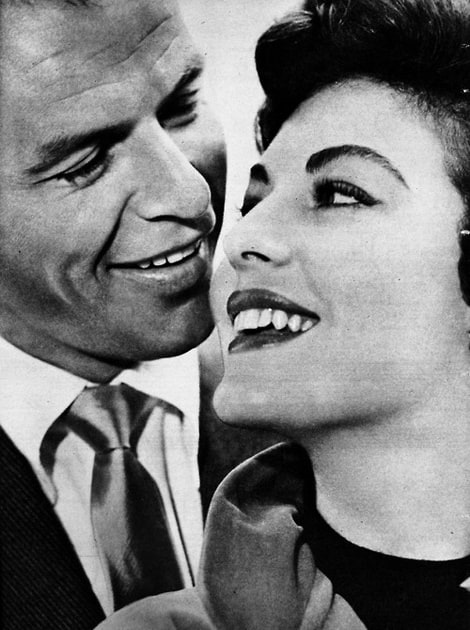


Story:
As his singing and cinema career flourished, the delectable bodies of the swooning young women all around him proved increasingly irresistible to the 32-year-old Frank Sinatra, especially when he looked at his wife Nancy, growing great with child for the third time.
He had never been faithful but now he came and went as he pleased and did exactly what he wanted, with whomever he wanted. He dallied with actress Lana Turner and told her he would leave his wife.
But he didn’t. Not for her.
One night in 1948 he stood on the terrace of his Hollywood bachelor penthouse with his best friend, the songwriter Sammy Cahn, looking down over Sunset Strip.
‘Do you know that Ava Gardner lives down there?’ said Cahn, pointing to a little house nestled into the trees.
The name of the hot young film star stirred Sinatra. He had long lusted after her. With the kind of beauty that comes along once in a hundred years, she transfixed men and women alike. She took her pleasures as she found them — and she found them everywhere.
Cupping his hands to his mouth, he yelled ‘Ava … Ava Gardner!’ his big voice carrying far into the quiet evening. ‘We know you’re down there. Hello, Ava.’
The two men roared with laughter. And then a miracle. Down below, a curtain was drawn, a window opened and Ava stuck her head out. She knew exactly who it was. Sinatra’s voice was unmistakable. She grinned and waved.
Was it an accident that they ran into each other a few days later, in front of her place? And then again in the street? Frank wasn’t usually keen on walking but suddenly he was getting out a lot. The third time, they both began laughing as he said hello.
Ava’s eyes searched his. Was he following her? He met her gaze boldly. She put a hand on her shapely hip, provocatively. He spoke. ‘Ava, let’s be friends. Why don’t we have dinner tonight?’
He had met her, he remembered, when she was an 18-year-old starlet newly arrived in Hollywood and Mickey Rooney, no less, was madly in love with her. Though she was smokingly sexy, she was just a kid, Sinatra thought at the time, too young for him.
So he was content just to stare at those dazzlingly high cheekbones and haughty green eyes.
He met her again and danced with her in a nightclub when he was with Lana, and she — at 23, divorced from both Rooney and her second husband, the band leader Artie Shaw — was with the billionaire tycoon Howard Hughes.
Then Sinatra’s friend Peter Lawford brought her to one of his parties. Dark haired with a white fur stole on her wide shoulders, he noticed how she prowled with the easy grace of a tigress.
And now, here they were, just the two of them, faced with a decision. ‘I damn well knew he was married,’ Ava recalled, ‘and married men were definitely not high on my hit parade.
‘But he was handsome, with his thin, boyish face, bright blue eyes and incredible grin. And he was so enthusiastic and invigorated, clearly pleased with life, in general, himself, in particular, and, at that moment, me.’
So began one of Hollywood’s legendary pairings of alpha male and female.
That night they went out drinking. Despite her stupendous looks, she had no confidence and alcohol, consumed in quantity, made her forget her deep self-doubt and feel glamorous, intelligent, desirable — a person worthy of the attentions of Frank Sinatra.
She had always had a thing for musicians but he was in a different league. His voice had a quality, she said, ‘I’d only heard in two other people — Judy Garland and Maria Callas. It made me want to cry for happiness, like a beautiful sunset or a boys’ choir singing Christmas carols’.
Now here she was, sitting with him, staring at him. Could she be in love?
Frank took in her stare and told himself that here, for the first time in his life, was someone who instinctively knew him and all his secrets.
He took her hand (she kept stealing glances at his hands; they were beautiful) and led her to his car. She swore her deepest oath to herself that she would not sleep with him.
And, indeed she didn’t. Not that night. They went to his apartment, kissed and he reached to unzip her dress. And though in most cases she was out of her clothes in a second, with him she hesitated.
She touched his arm and called him ‘Francis’. No one had ever done that before. Then he took her home.
It was months before they saw each other again, but when they did Frank fell as fast as she did. In a flash, all his discontent alchemised into the most powerful emotion he had ever known.
This time they did make love, and, said Ava: ‘It was magic. We became lovers for ever, eternally. Big words, I know, but I truly felt that no matter what happened we would always be in love.’ Frank told Ava: ‘All my life, being a singer was the most important thing in the world. Now you’re all I want.’
He had, at last, found a true partner in the opera that was his life. All his other women had been supporting players, but Ava was a diva with a soul whose turbulence equalled his own. Both harboured profound feelings of worthlessness, which expressed themselves in volcanic furies.
‘We were high-strung people,’ she said. ‘Possessive, jealous and liable to explode fast. When I lose my temper, you can’t find it any place. He’s the same.’
Both had titanic appetites, for food, drink, cigarettes, diversion, companionship and sex. Both loved jazz. Both were politically liberal. Both were fascinated with prostitution and perversity. Both distrusted sleep, fearing it as death’s mirror. Both hated being alone.
Like him, she was infinitely restless and easily bored. In both, this tendency could lead to casual cruelty to others —and to each other. They quarrelled constantly. Friends whose house the lovers met in recalled how Ava would scream at Frank and he would slam the door and storm downstairs.
‘Minutes later we’d smell sweet fragrance in the air. Ava had decided she wasn’t mad any more and so she sprayed the stairs with her perfume. Frank would smell it and race back up to the bedroom.’
There was lots of making-up sex, after which they nestled sweetly in each other’s arms and swore never to fight again. But the fact was that Frank and Ava were a permanently unstable compound and no amount of sex — no matter how spectacular — was sufficient to keep them bonded.
Or as Ava later confided: ‘The problems were never in bed. The problems would start on the way to the bidet.’
Ava had trouble with intimacy. When a man fell in love with her, she reciprocated for a little while, then she began to torment him.
‘With her acid tongue, she was ruthless with him,’ said one friend. ‘I was scared to death of her. I did what I could to stay out of her way.’
For Frank, the similarities with his bullying mother — who used to beat him but whose approval he constantly craved — were scary and exciting.
In their constant battles, jealousy was their emotional ammunition. Frank could trigger it in her with the blink of an eye, so conditioned was he to scanning any crowded party for gorgeous girls. She was convinced he was cheating on her, even when he wasn’t.
Meanwhile, he couldn’t get out of his mind the many other men there had been in her life. Out relaxing on a boat on a lake one day, Frank suddenly said to her: ‘I bet Howard Hughes has got a bigger boat than this. I suppose you wish you were out here with him.’
Ava retorted: ‘I don’t care if he owns the Queen Mary. I’m not sorry I’m not with him. So shut up.’ ‘Don’t tell me to shut up,’ Frank snarled. They were off again.
Despite the difficulties between them, after his divorce from Nancy the couple married. ‘We’re going to redecorate Frank’s home,’ Ava gushed. ‘I’m going to learn to make all his favourite dishes. Mama Sinatra has promised to send the recipes. Oh, it’s all so thrilling and wonderful! Mrs Frank Sinatra is the happiest girl in the world!’
And she was, sometimes. But at other times, as Sammy Cahn’s wife Gloria recalled, being with them ‘was like sitting on cracked eggs. You never knew if there were going to be verbal daggers. And Frank was so subservient to her. He was insane about that woman’.
But if it was hard work being married to Ava Gardner, it was just as tough being married to Frank Sinatra.
‘Neither gave an inch,’ a friend of Ava’s said, ‘though Frank worked harder on the marriage than she did. She’s a very selfish girl.’
It didn’t help that Frank’s career was on a downward spiral at the time — records not selling, films flopping — while hers was very much on the up. As a foul-mouthed facsimile of his mother, she was the dominant one in the relationship. As a sexual volcano, she ruled him in bed. And to top it all off, she was paying the bills while he struggled. The combination was corrosive.
She was not faithful, especially when she was away working. On location for a Western in the foothills of the Rockies, there was nothing to do but drink and have sex. Ava did a lot of the former and some of the latter with the stuntmen, and a little of both with the director.
‘Ava couldn’t be alone,’ said a production man on another of her film sets, ‘which is why she had so many affairs. She’d say: “Hey, come on, have a drink with me, I’m bored all by myself.” Then she’d bring back a prop man or whoever to her tent.’
She and Frank celebrated their first anniversary on their way to Africa where she was once again filming.
‘It was quite an occasion for me,’ she recalled. ‘I had been married twice before but never for a whole year.’ But it was increasingly obvious that this one wasn’t going to go the distance either.
They were forever breaking up, then getting back together. They would throw each other’s clothes, books and records out of the windows. The police had to be called more than once. The gossip columns had a field day, following their every move, tracking the time they spent together and apart.
Of course, it couldn’t last. Cupid didn’t have enough arrows in his quiver for this pair. And when Ava eventually confided to friends that Frank could no longer satisfy her sexually, it was clear the glue that held them together was loosening.
Increasingly she signed up for work that took her away from him. In Europe — while Frank was back in the U.S. making From Here To Eternity, the film that would put his career back on track — she was pursuing Spain’s best-known bullfighter, Luis Miguel Dominguín, four years her junior.
‘I’ll never figure you broads out,’ her co-star Humphrey Bogart said. ‘Half the world’s female population would throw themselves at Frank’s feet and you are flouncing around with guys who wear capes and ballerina slippers.’ ( that's right Bogie )
Frank began to panic as it dawned on him that they might be over. He couldn’t sleep. At five in the morning, he’d pour another whisky and rack his brains for a way to keep her.
He went berserk when he found out from a gossip column that she’d had a drink with his friend Peter Lawford. It was innocent, but he told Lawford he was sending somebody to break his legs. A friend who had to put up with his ranting said: ‘He’s driving me crazy! Ava, Ava, Ava! A billion broads in the world and he picks the one that can take or leave him!’
And leave him is what Ava did, blaming his infidelities. Later, she would say: ‘I was happier married to Frank than ever before. If I’d been willing to share him with other women we could have been happy.’
But, in reality, the break-up was her decision. In a desperate bid to keep her, he slit a wrist and was rushed semi-conscious to hospital. He imagined her at his bedside, her green eyes looking down on him.
But she didn’t come. Against medical advice, he discharged himself and flew to see her. Realising that playing the vulnerable boy wouldn’t work, he shrugged off the bandaged wrist as the result of an accident.
She smiled with relief — not that he was unharmed but because she’d been worried that, seeing him, she might be drawn back into a relationship.
He saw it. He was intuitive and especially attuned to the love of his life. As a boy, he had learned to watch his mother closely to figure out whether she was going to hug him or hit him. Later, he’d learned to watch Ava to see whether she was going to love him or leave him.
Now it was clear. She was leaving. The torrid Sinatra-Gardner romance was over. It was like the lyrics of a song he recorded soon after: ‘I could have told you she’d hurt you/She’d love you a while, then desert you.’
He sang it with all the pain and sadness of one who knew.
& Mia Farrow












As his singing and cinema career flourished, the delectable bodies of the swooning young women all around him proved increasingly irresistible to the 32-year-old Frank Sinatra, especially when he looked at his wife Nancy, growing great with child for the third time.
He had never been faithful but now he came and went as he pleased and did exactly what he wanted, with whomever he wanted. He dallied with actress Lana Turner and told her he would leave his wife.
But he didn’t. Not for her.
One night in 1948 he stood on the terrace of his Hollywood bachelor penthouse with his best friend, the songwriter Sammy Cahn, looking down over Sunset Strip.
‘Do you know that Ava Gardner lives down there?’ said Cahn, pointing to a little house nestled into the trees.
The name of the hot young film star stirred Sinatra. He had long lusted after her. With the kind of beauty that comes along once in a hundred years, she transfixed men and women alike. She took her pleasures as she found them — and she found them everywhere.
Cupping his hands to his mouth, he yelled ‘Ava … Ava Gardner!’ his big voice carrying far into the quiet evening. ‘We know you’re down there. Hello, Ava.’
The two men roared with laughter. And then a miracle. Down below, a curtain was drawn, a window opened and Ava stuck her head out. She knew exactly who it was. Sinatra’s voice was unmistakable. She grinned and waved.
Was it an accident that they ran into each other a few days later, in front of her place? And then again in the street? Frank wasn’t usually keen on walking but suddenly he was getting out a lot. The third time, they both began laughing as he said hello.
Ava’s eyes searched his. Was he following her? He met her gaze boldly. She put a hand on her shapely hip, provocatively. He spoke. ‘Ava, let’s be friends. Why don’t we have dinner tonight?’
He had met her, he remembered, when she was an 18-year-old starlet newly arrived in Hollywood and Mickey Rooney, no less, was madly in love with her. Though she was smokingly sexy, she was just a kid, Sinatra thought at the time, too young for him.
So he was content just to stare at those dazzlingly high cheekbones and haughty green eyes.
He met her again and danced with her in a nightclub when he was with Lana, and she — at 23, divorced from both Rooney and her second husband, the band leader Artie Shaw — was with the billionaire tycoon Howard Hughes.
Then Sinatra’s friend Peter Lawford brought her to one of his parties. Dark haired with a white fur stole on her wide shoulders, he noticed how she prowled with the easy grace of a tigress.
And now, here they were, just the two of them, faced with a decision. ‘I damn well knew he was married,’ Ava recalled, ‘and married men were definitely not high on my hit parade.
‘But he was handsome, with his thin, boyish face, bright blue eyes and incredible grin. And he was so enthusiastic and invigorated, clearly pleased with life, in general, himself, in particular, and, at that moment, me.’
So began one of Hollywood’s legendary pairings of alpha male and female.
That night they went out drinking. Despite her stupendous looks, she had no confidence and alcohol, consumed in quantity, made her forget her deep self-doubt and feel glamorous, intelligent, desirable — a person worthy of the attentions of Frank Sinatra.
She had always had a thing for musicians but he was in a different league. His voice had a quality, she said, ‘I’d only heard in two other people — Judy Garland and Maria Callas. It made me want to cry for happiness, like a beautiful sunset or a boys’ choir singing Christmas carols’.
Now here she was, sitting with him, staring at him. Could she be in love?
Frank took in her stare and told himself that here, for the first time in his life, was someone who instinctively knew him and all his secrets.
He took her hand (she kept stealing glances at his hands; they were beautiful) and led her to his car. She swore her deepest oath to herself that she would not sleep with him.
And, indeed she didn’t. Not that night. They went to his apartment, kissed and he reached to unzip her dress. And though in most cases she was out of her clothes in a second, with him she hesitated.
She touched his arm and called him ‘Francis’. No one had ever done that before. Then he took her home.
It was months before they saw each other again, but when they did Frank fell as fast as she did. In a flash, all his discontent alchemised into the most powerful emotion he had ever known.
This time they did make love, and, said Ava: ‘It was magic. We became lovers for ever, eternally. Big words, I know, but I truly felt that no matter what happened we would always be in love.’ Frank told Ava: ‘All my life, being a singer was the most important thing in the world. Now you’re all I want.’
He had, at last, found a true partner in the opera that was his life. All his other women had been supporting players, but Ava was a diva with a soul whose turbulence equalled his own. Both harboured profound feelings of worthlessness, which expressed themselves in volcanic furies.
‘We were high-strung people,’ she said. ‘Possessive, jealous and liable to explode fast. When I lose my temper, you can’t find it any place. He’s the same.’
Both had titanic appetites, for food, drink, cigarettes, diversion, companionship and sex. Both loved jazz. Both were politically liberal. Both were fascinated with prostitution and perversity. Both distrusted sleep, fearing it as death’s mirror. Both hated being alone.
Like him, she was infinitely restless and easily bored. In both, this tendency could lead to casual cruelty to others —and to each other. They quarrelled constantly. Friends whose house the lovers met in recalled how Ava would scream at Frank and he would slam the door and storm downstairs.
‘Minutes later we’d smell sweet fragrance in the air. Ava had decided she wasn’t mad any more and so she sprayed the stairs with her perfume. Frank would smell it and race back up to the bedroom.’
There was lots of making-up sex, after which they nestled sweetly in each other’s arms and swore never to fight again. But the fact was that Frank and Ava were a permanently unstable compound and no amount of sex — no matter how spectacular — was sufficient to keep them bonded.
Or as Ava later confided: ‘The problems were never in bed. The problems would start on the way to the bidet.’
Ava had trouble with intimacy. When a man fell in love with her, she reciprocated for a little while, then she began to torment him.
‘With her acid tongue, she was ruthless with him,’ said one friend. ‘I was scared to death of her. I did what I could to stay out of her way.’
For Frank, the similarities with his bullying mother — who used to beat him but whose approval he constantly craved — were scary and exciting.
In their constant battles, jealousy was their emotional ammunition. Frank could trigger it in her with the blink of an eye, so conditioned was he to scanning any crowded party for gorgeous girls. She was convinced he was cheating on her, even when he wasn’t.
Meanwhile, he couldn’t get out of his mind the many other men there had been in her life. Out relaxing on a boat on a lake one day, Frank suddenly said to her: ‘I bet Howard Hughes has got a bigger boat than this. I suppose you wish you were out here with him.’
Ava retorted: ‘I don’t care if he owns the Queen Mary. I’m not sorry I’m not with him. So shut up.’ ‘Don’t tell me to shut up,’ Frank snarled. They were off again.
Despite the difficulties between them, after his divorce from Nancy the couple married. ‘We’re going to redecorate Frank’s home,’ Ava gushed. ‘I’m going to learn to make all his favourite dishes. Mama Sinatra has promised to send the recipes. Oh, it’s all so thrilling and wonderful! Mrs Frank Sinatra is the happiest girl in the world!’
And she was, sometimes. But at other times, as Sammy Cahn’s wife Gloria recalled, being with them ‘was like sitting on cracked eggs. You never knew if there were going to be verbal daggers. And Frank was so subservient to her. He was insane about that woman’.
But if it was hard work being married to Ava Gardner, it was just as tough being married to Frank Sinatra.
‘Neither gave an inch,’ a friend of Ava’s said, ‘though Frank worked harder on the marriage than she did. She’s a very selfish girl.’
It didn’t help that Frank’s career was on a downward spiral at the time — records not selling, films flopping — while hers was very much on the up. As a foul-mouthed facsimile of his mother, she was the dominant one in the relationship. As a sexual volcano, she ruled him in bed. And to top it all off, she was paying the bills while he struggled. The combination was corrosive.
She was not faithful, especially when she was away working. On location for a Western in the foothills of the Rockies, there was nothing to do but drink and have sex. Ava did a lot of the former and some of the latter with the stuntmen, and a little of both with the director.
‘Ava couldn’t be alone,’ said a production man on another of her film sets, ‘which is why she had so many affairs. She’d say: “Hey, come on, have a drink with me, I’m bored all by myself.” Then she’d bring back a prop man or whoever to her tent.’
She and Frank celebrated their first anniversary on their way to Africa where she was once again filming.
‘It was quite an occasion for me,’ she recalled. ‘I had been married twice before but never for a whole year.’ But it was increasingly obvious that this one wasn’t going to go the distance either.
They were forever breaking up, then getting back together. They would throw each other’s clothes, books and records out of the windows. The police had to be called more than once. The gossip columns had a field day, following their every move, tracking the time they spent together and apart.
Of course, it couldn’t last. Cupid didn’t have enough arrows in his quiver for this pair. And when Ava eventually confided to friends that Frank could no longer satisfy her sexually, it was clear the glue that held them together was loosening.
Increasingly she signed up for work that took her away from him. In Europe — while Frank was back in the U.S. making From Here To Eternity, the film that would put his career back on track — she was pursuing Spain’s best-known bullfighter, Luis Miguel Dominguín, four years her junior.
‘I’ll never figure you broads out,’ her co-star Humphrey Bogart said. ‘Half the world’s female population would throw themselves at Frank’s feet and you are flouncing around with guys who wear capes and ballerina slippers.’ ( that's right Bogie )
Frank began to panic as it dawned on him that they might be over. He couldn’t sleep. At five in the morning, he’d pour another whisky and rack his brains for a way to keep her.
He went berserk when he found out from a gossip column that she’d had a drink with his friend Peter Lawford. It was innocent, but he told Lawford he was sending somebody to break his legs. A friend who had to put up with his ranting said: ‘He’s driving me crazy! Ava, Ava, Ava! A billion broads in the world and he picks the one that can take or leave him!’
And leave him is what Ava did, blaming his infidelities. Later, she would say: ‘I was happier married to Frank than ever before. If I’d been willing to share him with other women we could have been happy.’
But, in reality, the break-up was her decision. In a desperate bid to keep her, he slit a wrist and was rushed semi-conscious to hospital. He imagined her at his bedside, her green eyes looking down on him.
But she didn’t come. Against medical advice, he discharged himself and flew to see her. Realising that playing the vulnerable boy wouldn’t work, he shrugged off the bandaged wrist as the result of an accident.
She smiled with relief — not that he was unharmed but because she’d been worried that, seeing him, she might be drawn back into a relationship.
He saw it. He was intuitive and especially attuned to the love of his life. As a boy, he had learned to watch his mother closely to figure out whether she was going to hug him or hit him. Later, he’d learned to watch Ava to see whether she was going to love him or leave him.
Now it was clear. She was leaving. The torrid Sinatra-Gardner romance was over. It was like the lyrics of a song he recorded soon after: ‘I could have told you she’d hurt you/She’d love you a while, then desert you.’
He sang it with all the pain and sadness of one who knew.
& Mia Farrow





Moon River's rating:


& Gloria Stewart






Story:
After World War II, Stewart settled down, at age 41, marrying former model Gloria Hatrick McLean on August 9, 1949. As Stewart loved to recount in self-mockery, "I, I, I pitched the big question to her last night and to my surprise she, she, she said yes!". Stewart adopted her two sons, Michael and Ronald, and with Gloria he had twin daughters, Judy and Kelly, on May 7, 1951. The couple remained married until her death from lung cancer on February 16, 1994, at the age of 75.






After World War II, Stewart settled down, at age 41, marrying former model Gloria Hatrick McLean on August 9, 1949. As Stewart loved to recount in self-mockery, "I, I, I pitched the big question to her last night and to my surprise she, she, she said yes!". Stewart adopted her two sons, Michael and Ronald, and with Gloria he had twin daughters, Judy and Kelly, on May 7, 1951. The couple remained married until her death from lung cancer on February 16, 1994, at the age of 75.
Moon River's rating:


& Janet Leigh







Story:
Janet Leigh and Tony Curtis were a glittering Hollywood couple, the Cruise and Kidman of the 1950s. Wherever they went, Curtis’ roguish good looks and Leigh’s childlike beauty drew the lenses of the paparazzi. Successful and ambitious, for a while they had it ‘all’, and that included love and two fine children.
The romance and marriage in 1951 began happily - both actors were rising stars, their names faces graced the covers of the magazines and the fans swooned. The couple hung out with Frank Sinatra’s 'Rat Pack', drinking and indulging through the night. As Leigh grew up, she became ever more sexy and glamourous. Dying her hair blonder and wearing her clothes tighter, she was often photographed in provocative poses.
Playing to the adoring the fans, big name films started to sign the beautiful actors and their schedules filled up. In 1953, Curtis and Leigh took the leading roles in 'Houdini', a razzle-dazzle biography of the great escape artist. It was the first of five films they were to make together.
As the work piled up, Leigh discovered she was pregnant with her first daughter Kelly in 1956, and two years later she gave birth to their second daughter, Jamie Lee.
After a decade of marriage, problems became apparent. Curtis’ love of intoxicants was legendary and both stars were reveling in massive personal success. In 1960 alone, Leigh was famously butchered in the shower in Alfred Hitchcock’s Psycho and Curtis stared in Stanely Kubrick’s mighty Spartacus.
Divorce came in 1962, when Curtis dumped Leigh and the children for a young Austrian actress, Christine Kaufmann. He went on to marry four more times. And Leigh almost immediately remarried stockbroker Robert Brandt and moved with her daughters to live a quieter life in the suburbs of LA.







Janet Leigh and Tony Curtis were a glittering Hollywood couple, the Cruise and Kidman of the 1950s. Wherever they went, Curtis’ roguish good looks and Leigh’s childlike beauty drew the lenses of the paparazzi. Successful and ambitious, for a while they had it ‘all’, and that included love and two fine children.
The romance and marriage in 1951 began happily - both actors were rising stars, their names faces graced the covers of the magazines and the fans swooned. The couple hung out with Frank Sinatra’s 'Rat Pack', drinking and indulging through the night. As Leigh grew up, she became ever more sexy and glamourous. Dying her hair blonder and wearing her clothes tighter, she was often photographed in provocative poses.
Playing to the adoring the fans, big name films started to sign the beautiful actors and their schedules filled up. In 1953, Curtis and Leigh took the leading roles in 'Houdini', a razzle-dazzle biography of the great escape artist. It was the first of five films they were to make together.
As the work piled up, Leigh discovered she was pregnant with her first daughter Kelly in 1956, and two years later she gave birth to their second daughter, Jamie Lee.
After a decade of marriage, problems became apparent. Curtis’ love of intoxicants was legendary and both stars were reveling in massive personal success. In 1960 alone, Leigh was famously butchered in the shower in Alfred Hitchcock’s Psycho and Curtis stared in Stanely Kubrick’s mighty Spartacus.
Divorce came in 1962, when Curtis dumped Leigh and the children for a young Austrian actress, Christine Kaufmann. He went on to marry four more times. And Leigh almost immediately remarried stockbroker Robert Brandt and moved with her daughters to live a quieter life in the suburbs of LA.
Moon River's rating:


& Joan Crawford











Story:
Joan Crawford and Douglas Fairbanks Jr. were the "it" couple in the late 1920s into the early 1930s. The two were young, beautiful and in love and married on June 3rd 1929. Even though the young couple came from two different sides of the tracks, they seemed to be perfect for each other. The couple appeared to have it all, but after a four years of marriage the couple divorced on May 12, 1933. What went wrong?
In 1927 young Doug was filming "Woman Love Diamonds" with big silent stars Greta Garbo and John Gilbert. Gilbert was also filming another movie at the same time in the next studio over called "Twelve Miles Out" with Joan Crawford. This was when Joan and Doug first initially met; Joan thought Fairbanks Jr. was stuffy at their brief meeting. It was in 1928 that Joan began to learn more about her future husband. Joan attended a theatrical performance at the Vine Street Playhouse called "Young Woodley" that was starring Douglas Fairbanks Jr. This is when Joan started to take a shine to Doug and Joan sent a telegram complimenting him on his fine performance. Joan was highly attracted to the young stud but she had no intentions of wanting to marry the young man she just wanted a little "fun."
Joan and Doug were coming from different backgrounds and Doug was brought up in fine schools and wealthy parents and he came off as a pretty boy snob to most riding on his father's coattails. Joan came from near poverty and had to earn her way through schools as a youth cleaning and doing menial chores. Joan was earning her way as an actress through hard work and trial and error. But there was one area that Joan was a little more "educated" in and that was sex. Douglas Jr. was not that experienced in this department and Joan introduced Doug to a few techniques to say the least. As the two began to get to know each other intimately they also both started to fall in love with each other.
After the two had fallen in love, Joan had a few obstacles to over come, his family. Doug's mother Anna didn't want her son getting married so soon and called Joan "a fast girl." Mary Pickford just plain out didn't like Joan at first; possibly jealous of the young stars rise in Hollywood and her talent and beauty. Douglas Fairbanks Sr. noticed all these qualities of Joan and although he thought Joan was just a fling, he to a shine to Joan. Although Joan and Doug were both in love and seriously dating in 1928, Joan was still not invited to the famous "Pickfair," the house of Fairbanks Sr. and Mary Pickford, and wouldn't be for some time to come.
On December 31st 1928, New Year's Eve, Douglas Fairbanks Jr. proposed to Joan Crawford in Long Beach New York and Joan excitedly accepted. Some have questioned whether Joan had a motive in marrying Douglas Fairbanks Jr. Joan wanted that Hollywood "in" to solidify her stardom and success in Hollywood. Notorious gossip columnist Adela Rogers wrote in "Photoplay," "Though it was a love match, Joan was anxious to better herself." Joan was already on her way to becoming one of the biggest actresses ever. She was coming off the success of her monster hit "Our Dancing Daughters" and she was ready to graduate successfully into talking pictures and would soon be named the biggest female star of 1930.
Joan and Doug Jr. worked on their first and only motion picture together during their engagement, "Our Modern Maidens" the studio capitalized on the media's fixation with the two lovebirds. The film was a similar to the 1928 "Our Dancing Daughters" and drew in the jazz and modern crowd. At the time of the release of "Our Modern Maidens" Joan and Doug Jr. were newly married and the movie was a smash-hit.
"On June 3rd 1929 the couple was married at St. Malachy's Roman Catholic Church in New York and spent their honeymoon at the Algonquin Hotel. Joan's family was in attendance but only Doug Jr's mother had been in attendance, there was no sight of Fairbanks Sr. and Mary Pickford, as they still didn't approve of Joan. They were not the only ones that didn't approve; believe it or not many socialites in Hollywood claimed that Doug married beneath himself and out side of his class. Many also were calling Joan a "cradle-robber" with Joan most likely being 5-6 years his senior (Joan's date of birth is speculated to be 1904, 1905 or 1906). There were no Hollywood parties; no gala's at "Pickfair," their marriage was quiet and simple.
Doug Jr. was helpful in polishing Joan's etiquette and social mannerisms. He was very instrumental in shaping the Joan Crawford of the future. Joan also in turn helps Doug Jr. believe more in him and be more assertive in grabbing the right kind of roles, just like she did. The couple was in love and formed a bond that would last long after their marriage. They soon would cement this friendship at Grauman's Chinese Theatre on September 14, 1929 where their hand and footprints are immortalized in cement. In Fairbanks Jr. biography "Salad Days" he states that there were no provisions for HIS prints to be planted at the theatre, only Joan's!
Joan and Doug bought a home together after their marriage at 426 North Bristol Avenue in Brentwood California in 1929. This home would remain Joan Crawford's home for more than 25 years. The home was christened "El JoDo" a take on both of their names and they spoofed the snooty "Pickfair" that Joan was still not invited to. They eventually started having their own parties and both having the time of their lives. They were young, successful and in love.
In 1930, a year after being married, Joan was finally invited to the coveted "Pickfair." Once they were invited, Joan and Doug spent much time their over the course of their marriage. Doug Sr. was smitten with the young and attractive Joan and Joan flirted with this and the two bonded. On the other hand, Mary Pickford remained jealous of Joan and never really warmed up to Joan. Besides Doug Sr., Joan never really felt welcomed at "Pickfair" and as time went on dreaded going there.
The talkies were in full swing and Joan has successfully transitioned unlike some other silent stars. Joan was focused on her career more than ever and this consumed most of her time and energy. Doug was not as ambitious as Joan and preferred the married life and relaxing out of the limelight. Although they were both still very much sexually attracted to each other, Joan was getting "bored" otherwise. This would be the beginning of the first sign of stress in their marriage.
By the end of 1930 Joan had taken interest in another man, Clark Gable. Joan had first met Clark in late 1929 when they filmed their first picture together "Dance Fools Dance" but it was in late 1930 while filming "Possessed" that a huge love affair had blossomed. It was 1931 and Joan was in love with Gable even though she was still married to Fairbanks Jr. Once "Possessed" (1931) hit the big screen you would have had to been blind to not see that Crawford and Gable were having a love affair and Fairbanks became well aware of this affair.
Over the course of 1932, Joan was not only absorbed in her career; she was also entranced with Gable and spent as much time as she could with him. Everyone from Louis B. Mayer to close friends tried to separate the two and try to keep both Crawford and Gable in their respected marriages. During 1932, Joan and Doug Jr. would attend premiers, events and social functions but Joan knew the marriage was over. Even after several attempt of going on trips out of the country to try to rekindle the dying marriage, Joan knew it was finished. While filming "Rain" Doug Jr. made one last attempt to help Joan come to her senses, Doug Jr. didn't want the marriage to end; he still loved Joan very much. They had talked of having children together in hopes of saving the marriage, Joan had a few miscarriages and she even admitted to having an abortion during this time as well. By the end of 1932, Joan had checked out of the marriage and filed for divorce.
On May 12, 1933 the divorce became final and the marriage of "El JoDo" was over. Joan and Doug stayed cordial to each other for the rest of their lives. They both spoke highly of each other in later years and they even spend tie together going out to dinner. The marriage between the two helped both of them learn from each other in many ways. Douglas wanted a wife that he could take care of and have children with and that's just what he did. Doug Jr. married a woman out of the spotlight Mary Lee Eppling in 1939 and they had three daughters together and stay married until her death in 1988. As we know Joan went on to marry again. She had her sights on another man right after her divorce with Fairbanks Jr. and it was no longer Gable.
"It was sort of love at first sight. We both knew it inside, yet we both held back from saying anything so we could study one another. It’s sort of like that with real love, don’t you think? If you believe you are really going to care for a girl, you are a little bit frightened to tell her about it. You can say all sorts of pretty things to a woman who doesn’t make a difference. But when you have a hunch that you’ve met the one woman, your tongue gets sort of twisted and swollen. Your heart turns such flip-flops that it almost keeps you from breathing. We realized on that first night that there was something inevitable about our friendship, but we both wanted to make sure about it."
-Douglas Fairbanks Jr., 1929











Joan Crawford and Douglas Fairbanks Jr. were the "it" couple in the late 1920s into the early 1930s. The two were young, beautiful and in love and married on June 3rd 1929. Even though the young couple came from two different sides of the tracks, they seemed to be perfect for each other. The couple appeared to have it all, but after a four years of marriage the couple divorced on May 12, 1933. What went wrong?
In 1927 young Doug was filming "Woman Love Diamonds" with big silent stars Greta Garbo and John Gilbert. Gilbert was also filming another movie at the same time in the next studio over called "Twelve Miles Out" with Joan Crawford. This was when Joan and Doug first initially met; Joan thought Fairbanks Jr. was stuffy at their brief meeting. It was in 1928 that Joan began to learn more about her future husband. Joan attended a theatrical performance at the Vine Street Playhouse called "Young Woodley" that was starring Douglas Fairbanks Jr. This is when Joan started to take a shine to Doug and Joan sent a telegram complimenting him on his fine performance. Joan was highly attracted to the young stud but she had no intentions of wanting to marry the young man she just wanted a little "fun."
Joan and Doug were coming from different backgrounds and Doug was brought up in fine schools and wealthy parents and he came off as a pretty boy snob to most riding on his father's coattails. Joan came from near poverty and had to earn her way through schools as a youth cleaning and doing menial chores. Joan was earning her way as an actress through hard work and trial and error. But there was one area that Joan was a little more "educated" in and that was sex. Douglas Jr. was not that experienced in this department and Joan introduced Doug to a few techniques to say the least. As the two began to get to know each other intimately they also both started to fall in love with each other.
After the two had fallen in love, Joan had a few obstacles to over come, his family. Doug's mother Anna didn't want her son getting married so soon and called Joan "a fast girl." Mary Pickford just plain out didn't like Joan at first; possibly jealous of the young stars rise in Hollywood and her talent and beauty. Douglas Fairbanks Sr. noticed all these qualities of Joan and although he thought Joan was just a fling, he to a shine to Joan. Although Joan and Doug were both in love and seriously dating in 1928, Joan was still not invited to the famous "Pickfair," the house of Fairbanks Sr. and Mary Pickford, and wouldn't be for some time to come.
On December 31st 1928, New Year's Eve, Douglas Fairbanks Jr. proposed to Joan Crawford in Long Beach New York and Joan excitedly accepted. Some have questioned whether Joan had a motive in marrying Douglas Fairbanks Jr. Joan wanted that Hollywood "in" to solidify her stardom and success in Hollywood. Notorious gossip columnist Adela Rogers wrote in "Photoplay," "Though it was a love match, Joan was anxious to better herself." Joan was already on her way to becoming one of the biggest actresses ever. She was coming off the success of her monster hit "Our Dancing Daughters" and she was ready to graduate successfully into talking pictures and would soon be named the biggest female star of 1930.
Joan and Doug Jr. worked on their first and only motion picture together during their engagement, "Our Modern Maidens" the studio capitalized on the media's fixation with the two lovebirds. The film was a similar to the 1928 "Our Dancing Daughters" and drew in the jazz and modern crowd. At the time of the release of "Our Modern Maidens" Joan and Doug Jr. were newly married and the movie was a smash-hit.
"On June 3rd 1929 the couple was married at St. Malachy's Roman Catholic Church in New York and spent their honeymoon at the Algonquin Hotel. Joan's family was in attendance but only Doug Jr's mother had been in attendance, there was no sight of Fairbanks Sr. and Mary Pickford, as they still didn't approve of Joan. They were not the only ones that didn't approve; believe it or not many socialites in Hollywood claimed that Doug married beneath himself and out side of his class. Many also were calling Joan a "cradle-robber" with Joan most likely being 5-6 years his senior (Joan's date of birth is speculated to be 1904, 1905 or 1906). There were no Hollywood parties; no gala's at "Pickfair," their marriage was quiet and simple.
Doug Jr. was helpful in polishing Joan's etiquette and social mannerisms. He was very instrumental in shaping the Joan Crawford of the future. Joan also in turn helps Doug Jr. believe more in him and be more assertive in grabbing the right kind of roles, just like she did. The couple was in love and formed a bond that would last long after their marriage. They soon would cement this friendship at Grauman's Chinese Theatre on September 14, 1929 where their hand and footprints are immortalized in cement. In Fairbanks Jr. biography "Salad Days" he states that there were no provisions for HIS prints to be planted at the theatre, only Joan's!
Joan and Doug bought a home together after their marriage at 426 North Bristol Avenue in Brentwood California in 1929. This home would remain Joan Crawford's home for more than 25 years. The home was christened "El JoDo" a take on both of their names and they spoofed the snooty "Pickfair" that Joan was still not invited to. They eventually started having their own parties and both having the time of their lives. They were young, successful and in love.
In 1930, a year after being married, Joan was finally invited to the coveted "Pickfair." Once they were invited, Joan and Doug spent much time their over the course of their marriage. Doug Sr. was smitten with the young and attractive Joan and Joan flirted with this and the two bonded. On the other hand, Mary Pickford remained jealous of Joan and never really warmed up to Joan. Besides Doug Sr., Joan never really felt welcomed at "Pickfair" and as time went on dreaded going there.
The talkies were in full swing and Joan has successfully transitioned unlike some other silent stars. Joan was focused on her career more than ever and this consumed most of her time and energy. Doug was not as ambitious as Joan and preferred the married life and relaxing out of the limelight. Although they were both still very much sexually attracted to each other, Joan was getting "bored" otherwise. This would be the beginning of the first sign of stress in their marriage.
By the end of 1930 Joan had taken interest in another man, Clark Gable. Joan had first met Clark in late 1929 when they filmed their first picture together "Dance Fools Dance" but it was in late 1930 while filming "Possessed" that a huge love affair had blossomed. It was 1931 and Joan was in love with Gable even though she was still married to Fairbanks Jr. Once "Possessed" (1931) hit the big screen you would have had to been blind to not see that Crawford and Gable were having a love affair and Fairbanks became well aware of this affair.
Over the course of 1932, Joan was not only absorbed in her career; she was also entranced with Gable and spent as much time as she could with him. Everyone from Louis B. Mayer to close friends tried to separate the two and try to keep both Crawford and Gable in their respected marriages. During 1932, Joan and Doug Jr. would attend premiers, events and social functions but Joan knew the marriage was over. Even after several attempt of going on trips out of the country to try to rekindle the dying marriage, Joan knew it was finished. While filming "Rain" Doug Jr. made one last attempt to help Joan come to her senses, Doug Jr. didn't want the marriage to end; he still loved Joan very much. They had talked of having children together in hopes of saving the marriage, Joan had a few miscarriages and she even admitted to having an abortion during this time as well. By the end of 1932, Joan had checked out of the marriage and filed for divorce.
On May 12, 1933 the divorce became final and the marriage of "El JoDo" was over. Joan and Doug stayed cordial to each other for the rest of their lives. They both spoke highly of each other in later years and they even spend tie together going out to dinner. The marriage between the two helped both of them learn from each other in many ways. Douglas wanted a wife that he could take care of and have children with and that's just what he did. Doug Jr. married a woman out of the spotlight Mary Lee Eppling in 1939 and they had three daughters together and stay married until her death in 1988. As we know Joan went on to marry again. She had her sights on another man right after her divorce with Fairbanks Jr. and it was no longer Gable.
"It was sort of love at first sight. We both knew it inside, yet we both held back from saying anything so we could study one another. It’s sort of like that with real love, don’t you think? If you believe you are really going to care for a girl, you are a little bit frightened to tell her about it. You can say all sorts of pretty things to a woman who doesn’t make a difference. But when you have a hunch that you’ve met the one woman, your tongue gets sort of twisted and swollen. Your heart turns such flip-flops that it almost keeps you from breathing. We realized on that first night that there was something inevitable about our friendship, but we both wanted to make sure about it."
-Douglas Fairbanks Jr., 1929
Moon River's rating:


& Audrey Hepburn







Story:
William Holden and Audrey Hepburn fell in love on the of Billy Wilder's Sabrina and began a very passionate affair.
“Before I even met her, I had a crush on her, and after I met her, just a day later, I felt as if we were old friends, and I was rather fiercely protective of her though not in a possessive way."
“She was the love of my life. Sometimes at night, I’d get a portable record player and drive out to the country to a little clearing we’d found. We’d put on ballet music. Some of our most magic moments were there.”
-William Holden
Supposedly Holden wanted to officially leave his wife Ardis, from whom he was separated for the majority of his marriage, and be with Audrey, but she turned him down because he’d had a vasectomy and being a mother was essential to her. I’ve never really seen that 100% substantiated. In any case, Audrey allegedly announced her engagement to Mel Ferrer at a party the Holdens were hosting. And you thought you’d been through bad break-ups.
Audrey married Mel Ferrer in 1954, Holden became an alcoholic who grew difficult to insure on pictures, and they did not see each other for a decade, until they were paired again in 1963 to film Paris When It Sizzles.
“I remember the day I arrived at Orly Airport for Paris When It Sizzles. I could hear my footsteps echoing against the walls of the transit corridor, just like a condemned man walking the last mile. I realized that I had to face Audrey and I had to deal with my drinking. And I didn’t think I could handle either situation.”
-William Holden
He was right in that assessment. Hollywood legend has it that William Holden tried repeatedly, with horrible results, to win back the woman he cited as the love of his life.
According to scriptwriter George Axelrod, Holden often showed up on set drunk and, on one occasion, climbed a tree by a wall leading up to her room. Hepburn leaned out the window to find out where the noise was coming from when Holden grabbed and kissed her. He then slipped out of the tree and landed on a parked car below.
Audrey’s interest in men, according to the few who got to know her intimately during her career, though strong, was intermittent. She had affairs when passing through emotionally tense times. She had a preference for men who made the first move, who were bold, … and [who] didn’t appreciate her rare nature. Observers were surprised at Audrey’s tolerance of her lovers’ habits, their bluntness and sometimes crude languge: the opposite of her composed nature. Perhaps that was where their attractiveness lay.
"I was determined to wipe Audrey out of my mind by screwing a woman in every country I visited. My plan succeeded, though sometimes with difficulty. When I was in Bangkok, I was with a Thai girl in a boat in one of the klongs. I guess we got too animated, because the boat tipped over and I fell into the filthy water. Back at the hotel I poured alcohol in my ears because I was afraid I'd become infected with the plague. When I got back to Hollywood, I went to Audrey's dressing-room and told her what I had done. You know what she said? 'Oh, Bill!' That's all. 'Oh, Bill!'. Just as though I were some naughty boy. She was the love of my life."
Audrey died of cancer January 20, 1993. As for William Holden...
On November 12, 1981, Holden was alone and intoxicated in his apartment in Santa Monica, California, when he slipped on a throw rug, severely lacerated his forehead on a teak bedside table, and bled to death. Evidence suggests he was conscious for at least half an hour after the fall. It is probable that he may not have realized the severity of the injury and did not summon aid, or was unable to call for help. His body was found four days later.







William Holden and Audrey Hepburn fell in love on the of Billy Wilder's Sabrina and began a very passionate affair.
“Before I even met her, I had a crush on her, and after I met her, just a day later, I felt as if we were old friends, and I was rather fiercely protective of her though not in a possessive way."
“She was the love of my life. Sometimes at night, I’d get a portable record player and drive out to the country to a little clearing we’d found. We’d put on ballet music. Some of our most magic moments were there.”
-William Holden
Supposedly Holden wanted to officially leave his wife Ardis, from whom he was separated for the majority of his marriage, and be with Audrey, but she turned him down because he’d had a vasectomy and being a mother was essential to her. I’ve never really seen that 100% substantiated. In any case, Audrey allegedly announced her engagement to Mel Ferrer at a party the Holdens were hosting. And you thought you’d been through bad break-ups.
Audrey married Mel Ferrer in 1954, Holden became an alcoholic who grew difficult to insure on pictures, and they did not see each other for a decade, until they were paired again in 1963 to film Paris When It Sizzles.
“I remember the day I arrived at Orly Airport for Paris When It Sizzles. I could hear my footsteps echoing against the walls of the transit corridor, just like a condemned man walking the last mile. I realized that I had to face Audrey and I had to deal with my drinking. And I didn’t think I could handle either situation.”
-William Holden
He was right in that assessment. Hollywood legend has it that William Holden tried repeatedly, with horrible results, to win back the woman he cited as the love of his life.
According to scriptwriter George Axelrod, Holden often showed up on set drunk and, on one occasion, climbed a tree by a wall leading up to her room. Hepburn leaned out the window to find out where the noise was coming from when Holden grabbed and kissed her. He then slipped out of the tree and landed on a parked car below.
Audrey’s interest in men, according to the few who got to know her intimately during her career, though strong, was intermittent. She had affairs when passing through emotionally tense times. She had a preference for men who made the first move, who were bold, … and [who] didn’t appreciate her rare nature. Observers were surprised at Audrey’s tolerance of her lovers’ habits, their bluntness and sometimes crude languge: the opposite of her composed nature. Perhaps that was where their attractiveness lay.
"I was determined to wipe Audrey out of my mind by screwing a woman in every country I visited. My plan succeeded, though sometimes with difficulty. When I was in Bangkok, I was with a Thai girl in a boat in one of the klongs. I guess we got too animated, because the boat tipped over and I fell into the filthy water. Back at the hotel I poured alcohol in my ears because I was afraid I'd become infected with the plague. When I got back to Hollywood, I went to Audrey's dressing-room and told her what I had done. You know what she said? 'Oh, Bill!' That's all. 'Oh, Bill!'. Just as though I were some naughty boy. She was the love of my life."
Audrey died of cancer January 20, 1993. As for William Holden...
On November 12, 1981, Holden was alone and intoxicated in his apartment in Santa Monica, California, when he slipped on a throw rug, severely lacerated his forehead on a teak bedside table, and bled to death. Evidence suggests he was conscious for at least half an hour after the fall. It is probable that he may not have realized the severity of the injury and did not summon aid, or was unable to call for help. His body was found four days later.
Moon River's rating:


& Barbara Stanwyck







Story:
“The overwhelming love of her life was the star Robert Taylor, who became her second husband. She could never stop caring for him even after they divorced.”
The marriage of Robert Taylor and Barbara Stanwyck was an odd one from the start. If it’s true that opposites attract, Taylor and Stanwyck are the classic example. He was a box-office attraction; she was a jobbing actress. He was well-educated; she was not. He was gentle; she was tough. He treated a woman like a lady; Barbara lit her own cigarettes and opened doors for herself. Bob was discreet; she was brutally frank. They met in 1936 on a blind date just before working together in “His Brother’s Wife.” There seemed to be a mutual attraction from the start but at this point MGM did not want Mr. Taylor to marry. They had already scuttled his engagement to Irene Hervey. Nevertheless the two became close and lived on adjoining ranches. They were considered a couple. In January of 1939 Photoplay magazine published a lengthy article about “Hollywood’s unmarried couples,” naming Taylor and Stanwyck, Gable and Lombard and others.
This changed MGM’s mind and the couples were encouraged to marry. In fact, the Taylor-Stanwyck union was essentially an arranged marriage. The arrangements for their May 1939 wedding were made by the studio and the only say Mr. Taylor had in it all was “I do.” Whether they would have married on their own is doubtful, although possible. From all reports, Stanwyck’s emotional commitment was far greater than Taylor’s.
Nonetheless, the marriage lasted for nearly twelve years. It wasn’t a marriage of equals–Stanwyck considered herself Taylor’s teacher and called him Junior. He called her the Queen. Given his tremendous dislike of confrontation, she was able to have things her way.
Within two years of the marriage, he had begun to stray with a fling of some sort with Lana Turner. Stanwyck was devastated and some reports say she cut her wrists to hold onto him. Robert Taylor continued to see other women during his marriage, included having affairs with Ava Gardner and Eleanor Parker The fact that the Taylors were separated so much–including his three year stint in the Navy–probably prolonged the marriage.
In 1950 Mr. Taylor spent most of the year in Rome making “Quo Vadis.” He indulged in an active social life, including a very public dalliance with Italian starlet Lia de Leo. Stanwyck flew to Rome to confront him and ask for a divorce. This is widely thought to have been a ruse to hold on to him rather than an actual desire to separate. In any case, to her horror, he accepted. Stanwyck stayed in Italy for six weeks, during which they apparently negotiated their future.
On February 21, 1951 Barbara Stanwyck divorced Robert Taylor. The divorce became final a year later. As part of the settlement, she was granted 15% of his gross earnings until she remarried or died. No one expected him to die first. The two remained friends despite everything and Stanwyck never remarried. She did collect her money religiously and by some reports, tried to get more from Mr. Taylor’s estate. Despite this, she always claimed that he was her one true love.







“The overwhelming love of her life was the star Robert Taylor, who became her second husband. She could never stop caring for him even after they divorced.”
The marriage of Robert Taylor and Barbara Stanwyck was an odd one from the start. If it’s true that opposites attract, Taylor and Stanwyck are the classic example. He was a box-office attraction; she was a jobbing actress. He was well-educated; she was not. He was gentle; she was tough. He treated a woman like a lady; Barbara lit her own cigarettes and opened doors for herself. Bob was discreet; she was brutally frank. They met in 1936 on a blind date just before working together in “His Brother’s Wife.” There seemed to be a mutual attraction from the start but at this point MGM did not want Mr. Taylor to marry. They had already scuttled his engagement to Irene Hervey. Nevertheless the two became close and lived on adjoining ranches. They were considered a couple. In January of 1939 Photoplay magazine published a lengthy article about “Hollywood’s unmarried couples,” naming Taylor and Stanwyck, Gable and Lombard and others.
This changed MGM’s mind and the couples were encouraged to marry. In fact, the Taylor-Stanwyck union was essentially an arranged marriage. The arrangements for their May 1939 wedding were made by the studio and the only say Mr. Taylor had in it all was “I do.” Whether they would have married on their own is doubtful, although possible. From all reports, Stanwyck’s emotional commitment was far greater than Taylor’s.
Nonetheless, the marriage lasted for nearly twelve years. It wasn’t a marriage of equals–Stanwyck considered herself Taylor’s teacher and called him Junior. He called her the Queen. Given his tremendous dislike of confrontation, she was able to have things her way.
Within two years of the marriage, he had begun to stray with a fling of some sort with Lana Turner. Stanwyck was devastated and some reports say she cut her wrists to hold onto him. Robert Taylor continued to see other women during his marriage, included having affairs with Ava Gardner and Eleanor Parker The fact that the Taylors were separated so much–including his three year stint in the Navy–probably prolonged the marriage.
In 1950 Mr. Taylor spent most of the year in Rome making “Quo Vadis.” He indulged in an active social life, including a very public dalliance with Italian starlet Lia de Leo. Stanwyck flew to Rome to confront him and ask for a divorce. This is widely thought to have been a ruse to hold on to him rather than an actual desire to separate. In any case, to her horror, he accepted. Stanwyck stayed in Italy for six weeks, during which they apparently negotiated their future.
On February 21, 1951 Barbara Stanwyck divorced Robert Taylor. The divorce became final a year later. As part of the settlement, she was granted 15% of his gross earnings until she remarried or died. No one expected him to die first. The two remained friends despite everything and Stanwyck never remarried. She did collect her money religiously and by some reports, tried to get more from Mr. Taylor’s estate. Despite this, she always claimed that he was her one true love.
Moon River's rating:


& Mickey Rooney







Story:
Hollywood, in its Golden Age, was a dream machine spinning images of adventure, glamour, and most of all, romance.
MGM’s roster of female stars constituted the greatest collection of beautiful and talented women the world has ever known.
One of the greatest was Ava Gardner.
As an emerging starlet in the early 1940′s, before she made a single movie the Southern beauty was simply breathtaking, the talk of the town.
Mickey Rooney was MGM’s golden boy, a versatile star equally adept at musicals, comedy and drama. His signature role as the small-town youngster Andy Hardy made him something of a cash cow for the studio. The Hardy movies were cheap to produce and earned enormous profits.
In his compulsively readable autobiography, Life is Too Short, Rooney claims that his mother worked for a time as a prostitute in order to put food on the table during the depths of the Depression. Thus, it’s not surprising that Rooney pursued women like an obsessive compulsive, seeking affection and love in all the wrong places: call girls, ambitious actresses and mature, lonely women—including Norma Shearer—smitten by Rooney’s brash boyish charm.
The first time Rooney laid eyes on Ava Gardner was when she visited the set of Babes on Broadway, in 1941. She was wearing a wispy summer dress and high heels. Rooney was also wearing a dress and high heels—a Carmen Miranda costume.
Rooney recalls the dream-like moment:
“Hello,” said Ava. That’s all. Just hello. And without a smile. But she said it in the soft drawl of her native rural North Carolina, and I was a goner. I had known many beautiful women in my lifetime, but this little lady topped them all. She was five feet one, but she invariably wore high heels, so she was about my height when I was wearing five-inch wedgies.
Ava was eighteen years old, Rooney, 21, and his technique with women, he admits, was a combination of early Neanderthal and late Freud. He pursued the gorgeous young starlet with ferocious determination. After turning down five dates Ava finally succumbed, out of sheer exhaustion and because as one of MGM’s most powerful stars Rooney could, Ava understood, do quite a bit to advance her career.
After a night of drinking, dancing and table-hopping at Chasen’s, Rooney was smitten. When he saw Ava to her door at two in the morning Rooney impulsively proposed marriage.
Ava, playing a cool customer but in truth a tongue-tied country girl, gave a little hoot, smiled and ducked into her apartment.
For the next few weeks Rooney kept asking and Ava kept evading.
Soon after December 7, 1941, Rooney presented Ava with a huge diamond ring and once again popped the question.
There is nothing like war to concentrate the mind on love and romance.
Ava said yes.
They kissed and Rooney started to grope the inexperienced young woman from Grabtown, North Carolina.
But Ava Gardner would not sleep with Rooney before accepting the sacraments of marriage. She was a virgin, and she insisted, that was the way she was going to keep it until the wedding night.
Rooney was out of his mind with desire.
Hearing of the engagement, L.B. Mayer hit the ceiling. He accused Rooney of trying to destroy MGM. There was an image to preserve and marriage to an unknown hillbilly starlet did not fit the carefully crafted studio profile of Andy Hardy the clean-cut, all-American boy.
Terrified of Mayer’s incandescent temper Ava was ready to postpone the marriage. But Rooney stood up to the most powerful studio chief in Hollywood and threatened to break his contract if Mayer did not give his blessing to the union.
L.B. Mayer realized he was no match for Ava Gardner’s smoldering sensuality and wisely backed down. The wily mogul even hosted a bachelor party for Rooney. The guest list included: Clark Gable, Spencer Tracy, Robert Taylor, Lewis Stone, Bill Holden, Robert Montgomery, Lionel Barrymore, William Powell and Frederic March.
Ava and Mickey were married on January 10, 1942.
The wedding night should have been an MGM soft-focus dream of deep kisses, moonlight and unquenchable passion.
Mickey Rooney confesses the awful truth:
After the ceremony, we kissed our families good-bye and headed for our honeymoon in Carmel, at the Del Monte Inn…
We didn’t have a normal, sexy wedding night. I was a nervous wreck. Getting there had been more than half the fun. Now I didn’t quite know how to savor my victory. To quiet my nerves I drank too much champagne at dinner and barely made it back to our room before I took off my pants and sank into the bed. By the time Ava emerged from the bathroom, all dressed in white satin and lace, I was snoring heavily—dreaming, no doubt about how nice it was, being married to the most beautiful woman in the world.
The marriage was a predictable disaster. Rooney was interested in booze, betting, and babes—not necessarily in that order. Ava reports in her autobiography, Ava: My Story, that she spent the day posing for MGM publicity photos—her career had yet to ignite—then cooked, cleaned and decorated the house. She was trying to be a good wife.
But Rooney was a serial adulterer who spent all his time at the studio, the track, and a brothel stocked with prostitutes who were dead-ringers for Hollywood movie stars.
Go figure.
Finally Ava walked out on him. One year and five days after he slipped a ring on her finger bearing the engraving: “Love Forever,” they were divorced.
Years later, Ava somewhat wickedly characterized their union as Love Finds Andy Hardy.
Ava’s career soared after appearing as the femme fatale opposite Burt Lancaster in The Killers, 1946. But her love life was tumultuous, a blizzard of booze, wrenching love affairs and failed marriages to Frank Sinatra and Artie Shaw, volcanic and abusive men.
Rooney racked up an astonishing seven additional marriages after Ava.
Neither ever found true contentment in love or marriage.







Hollywood, in its Golden Age, was a dream machine spinning images of adventure, glamour, and most of all, romance.
MGM’s roster of female stars constituted the greatest collection of beautiful and talented women the world has ever known.
One of the greatest was Ava Gardner.
As an emerging starlet in the early 1940′s, before she made a single movie the Southern beauty was simply breathtaking, the talk of the town.
Mickey Rooney was MGM’s golden boy, a versatile star equally adept at musicals, comedy and drama. His signature role as the small-town youngster Andy Hardy made him something of a cash cow for the studio. The Hardy movies were cheap to produce and earned enormous profits.
In his compulsively readable autobiography, Life is Too Short, Rooney claims that his mother worked for a time as a prostitute in order to put food on the table during the depths of the Depression. Thus, it’s not surprising that Rooney pursued women like an obsessive compulsive, seeking affection and love in all the wrong places: call girls, ambitious actresses and mature, lonely women—including Norma Shearer—smitten by Rooney’s brash boyish charm.
The first time Rooney laid eyes on Ava Gardner was when she visited the set of Babes on Broadway, in 1941. She was wearing a wispy summer dress and high heels. Rooney was also wearing a dress and high heels—a Carmen Miranda costume.
Rooney recalls the dream-like moment:
“Hello,” said Ava. That’s all. Just hello. And without a smile. But she said it in the soft drawl of her native rural North Carolina, and I was a goner. I had known many beautiful women in my lifetime, but this little lady topped them all. She was five feet one, but she invariably wore high heels, so she was about my height when I was wearing five-inch wedgies.
Ava was eighteen years old, Rooney, 21, and his technique with women, he admits, was a combination of early Neanderthal and late Freud. He pursued the gorgeous young starlet with ferocious determination. After turning down five dates Ava finally succumbed, out of sheer exhaustion and because as one of MGM’s most powerful stars Rooney could, Ava understood, do quite a bit to advance her career.
After a night of drinking, dancing and table-hopping at Chasen’s, Rooney was smitten. When he saw Ava to her door at two in the morning Rooney impulsively proposed marriage.
Ava, playing a cool customer but in truth a tongue-tied country girl, gave a little hoot, smiled and ducked into her apartment.
For the next few weeks Rooney kept asking and Ava kept evading.
Soon after December 7, 1941, Rooney presented Ava with a huge diamond ring and once again popped the question.
There is nothing like war to concentrate the mind on love and romance.
Ava said yes.
They kissed and Rooney started to grope the inexperienced young woman from Grabtown, North Carolina.
But Ava Gardner would not sleep with Rooney before accepting the sacraments of marriage. She was a virgin, and she insisted, that was the way she was going to keep it until the wedding night.
Rooney was out of his mind with desire.
Hearing of the engagement, L.B. Mayer hit the ceiling. He accused Rooney of trying to destroy MGM. There was an image to preserve and marriage to an unknown hillbilly starlet did not fit the carefully crafted studio profile of Andy Hardy the clean-cut, all-American boy.
Terrified of Mayer’s incandescent temper Ava was ready to postpone the marriage. But Rooney stood up to the most powerful studio chief in Hollywood and threatened to break his contract if Mayer did not give his blessing to the union.
L.B. Mayer realized he was no match for Ava Gardner’s smoldering sensuality and wisely backed down. The wily mogul even hosted a bachelor party for Rooney. The guest list included: Clark Gable, Spencer Tracy, Robert Taylor, Lewis Stone, Bill Holden, Robert Montgomery, Lionel Barrymore, William Powell and Frederic March.
Ava and Mickey were married on January 10, 1942.
The wedding night should have been an MGM soft-focus dream of deep kisses, moonlight and unquenchable passion.
Mickey Rooney confesses the awful truth:
After the ceremony, we kissed our families good-bye and headed for our honeymoon in Carmel, at the Del Monte Inn…
We didn’t have a normal, sexy wedding night. I was a nervous wreck. Getting there had been more than half the fun. Now I didn’t quite know how to savor my victory. To quiet my nerves I drank too much champagne at dinner and barely made it back to our room before I took off my pants and sank into the bed. By the time Ava emerged from the bathroom, all dressed in white satin and lace, I was snoring heavily—dreaming, no doubt about how nice it was, being married to the most beautiful woman in the world.
The marriage was a predictable disaster. Rooney was interested in booze, betting, and babes—not necessarily in that order. Ava reports in her autobiography, Ava: My Story, that she spent the day posing for MGM publicity photos—her career had yet to ignite—then cooked, cleaned and decorated the house. She was trying to be a good wife.
But Rooney was a serial adulterer who spent all his time at the studio, the track, and a brothel stocked with prostitutes who were dead-ringers for Hollywood movie stars.
Go figure.
Finally Ava walked out on him. One year and five days after he slipped a ring on her finger bearing the engraving: “Love Forever,” they were divorced.
Years later, Ava somewhat wickedly characterized their union as Love Finds Andy Hardy.
Ava’s career soared after appearing as the femme fatale opposite Burt Lancaster in The Killers, 1946. But her love life was tumultuous, a blizzard of booze, wrenching love affairs and failed marriages to Frank Sinatra and Artie Shaw, volcanic and abusive men.
Rooney racked up an astonishing seven additional marriages after Ava.
Neither ever found true contentment in love or marriage.
Moon River's rating:


& William Powell






Story:
Carole Lombard fell in love with Powell while they filmed Man of the World in 1931. Sixteen years her senior, they married the same year and the union lasted a little over two years with them splitting amicably in 1933. Remaining on good terms allowed them to star together in the screwball comedy My Man Godfrey
in 1936. Powell was responsible for Lombard being signed for the film, insisting she was the only actress who could aptly handle the screwball heroine.






Carole Lombard fell in love with Powell while they filmed Man of the World in 1931. Sixteen years her senior, they married the same year and the union lasted a little over two years with them splitting amicably in 1933. Remaining on good terms allowed them to star together in the screwball comedy My Man Godfrey
in 1936. Powell was responsible for Lombard being signed for the film, insisting she was the only actress who could aptly handle the screwball heroine.
Moon River's rating:


& John Wayne







Story:
Like other male stars, who were romantically involved with their leading ladies, Wayne had several affairs with his onscreen women, such as Gail Russell and Marlene Dietrich.
Tay Garnett, the director of Wayne-Dietrich first film together, Seven Sinners,” described vividly how they met. “Marlene had the choice of all her leading men. I decided not to mention Wayne to her, but simply to place him in the Universal commissary where she couldn't miss him. He stood between us and our tables as we walked in for lunch, chatting with a couple of actresses I had set up.
Dietrich swept past him, then swiveled on her knees and looked him up and down as though he were a prime rib at Chasen's. As we sat down, she whispered right in my ear, 'Daddy, buy me that!' I said, 'Honey, it's settled. You got him.' Then at a pre-arranged signal, Wayne came to the table. If you didn't know what was gonna happen, you'd be as blind as a pit pony. Their relationship got off like a fireworks display. They were crazy about each other.”
Wayne and Dietrich starred in two other pictures, Pittsburgh” and The
Spoilers.” A good sport, Dietrich accompanied Wayne to football games and prizefights, and they fished and hunted together; she was his type of girl–glamorous but tough and down-to-earth, and with a good sense of humor.
Although Wayne was then having problems with his first wife, and he liked Dietrich, he was unwilling to give up his family life. Their relationship lasted on-and-off for several years, then faded away.







Like other male stars, who were romantically involved with their leading ladies, Wayne had several affairs with his onscreen women, such as Gail Russell and Marlene Dietrich.
Tay Garnett, the director of Wayne-Dietrich first film together, Seven Sinners,” described vividly how they met. “Marlene had the choice of all her leading men. I decided not to mention Wayne to her, but simply to place him in the Universal commissary where she couldn't miss him. He stood between us and our tables as we walked in for lunch, chatting with a couple of actresses I had set up.
Dietrich swept past him, then swiveled on her knees and looked him up and down as though he were a prime rib at Chasen's. As we sat down, she whispered right in my ear, 'Daddy, buy me that!' I said, 'Honey, it's settled. You got him.' Then at a pre-arranged signal, Wayne came to the table. If you didn't know what was gonna happen, you'd be as blind as a pit pony. Their relationship got off like a fireworks display. They were crazy about each other.”
Wayne and Dietrich starred in two other pictures, Pittsburgh” and The
Spoilers.” A good sport, Dietrich accompanied Wayne to football games and prizefights, and they fished and hunted together; she was his type of girl–glamorous but tough and down-to-earth, and with a good sense of humor.
Although Wayne was then having problems with his first wife, and he liked Dietrich, he was unwilling to give up his family life. Their relationship lasted on-and-off for several years, then faded away.
Moon River's rating:


& Norma Shearer







Story:
This is a love story, and the story of two people whom nobody would have heard of if they had accepted their limitations. The boy, Irving G. Thalberg, would become known as "the Boy Wonder" of MGM, and the girl, Norma Shearer, would become "the First Lady of Hollywood", yet each was an unlikely candidate for success.







This is a love story, and the story of two people whom nobody would have heard of if they had accepted their limitations. The boy, Irving G. Thalberg, would become known as "the Boy Wonder" of MGM, and the girl, Norma Shearer, would become "the First Lady of Hollywood", yet each was an unlikely candidate for success.
Moon River's rating:


Added to
6 votes
Tribute to my favorite!
(22 lists)list by BeautifulDirty
Published 11 years, 6 months ago  3 comments
3 comments
 3 comments
3 comments Login
Login
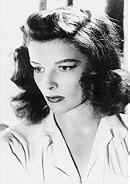
 8.5
8.5
 0
0
